
The Performance Racing Industry (PRI) Show is an experience; if you have any sort of interest in automotive performance, then you’re bound to find something you like on the premises of the Indiana Convention Center in Indianapolis, the heart of the racing world in North America. I make the trek every year for two reasons: to check out the newest products on the market for everything from hardcore drag cars and street performance machines to diesel trucks, and to network with people I get to see only once a year at this event. I always make several new industry contacts which turn out to be extremely worthwhile, and over the course of the show, I’ll walk approximately 30 miles.
This year, nearly every booth I walked into had some sort of massive chunk of billet aluminum on display; from engine blocks, to cylinder heads, intake manifolds, and more. Each one of those is a testament to several things: modern machining capability, tool quality, and most importantly, the minds of the engineers who dream them up. Ten years ago, who would have thought that you could not only design an engine block to be machined from a solid piece of material, but also design it to work in a water-cooled application, be reliable, and cost-effective to boot? This way the sportsman racer—no matter their racing discipline—might be able to actually afford to purchase it.
Simply put, the 2018 PRI Show could be called the “Year of the Billet Bullet”, as you’re about to see. There were several other parts and pieces which caught my eye for one reason for another, so follow along as I take you through the show from my perspective.
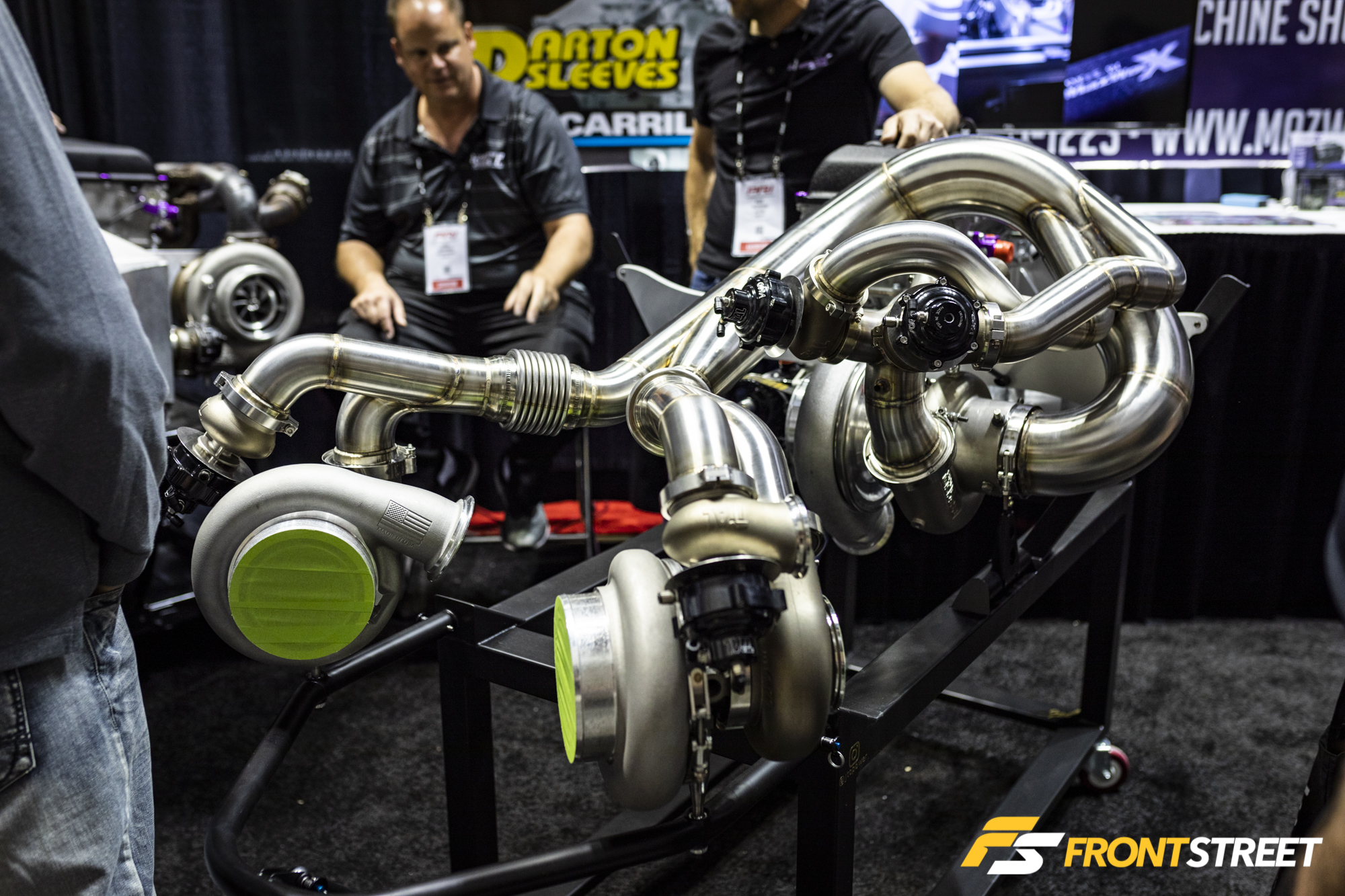
My good buddy Shane Tecklenburg of Tuned by Shane T—the leading MoTec tuner in the USA—held court in the Mazworx booth, talking about the team’s insane triple-compound-turbo SR20 engine they’ve designed to make 3,000-ish horsepower, from a 123 cubic-inch engine that develops around 100 horsepower in stock form. It was like listening to a mad scientist talk about pressure ratios and compound turbos and wastegate spring pressures and fabrication… all based around the billet Mazwork block. I could stand and listen to Shane talk all day, and even though I only pick up on about half of what he’s discussing, it’s fascinating stuff. Shane’s involved in so many different engine and projects, from drag setups like this to record-setting land-speed liners and more.
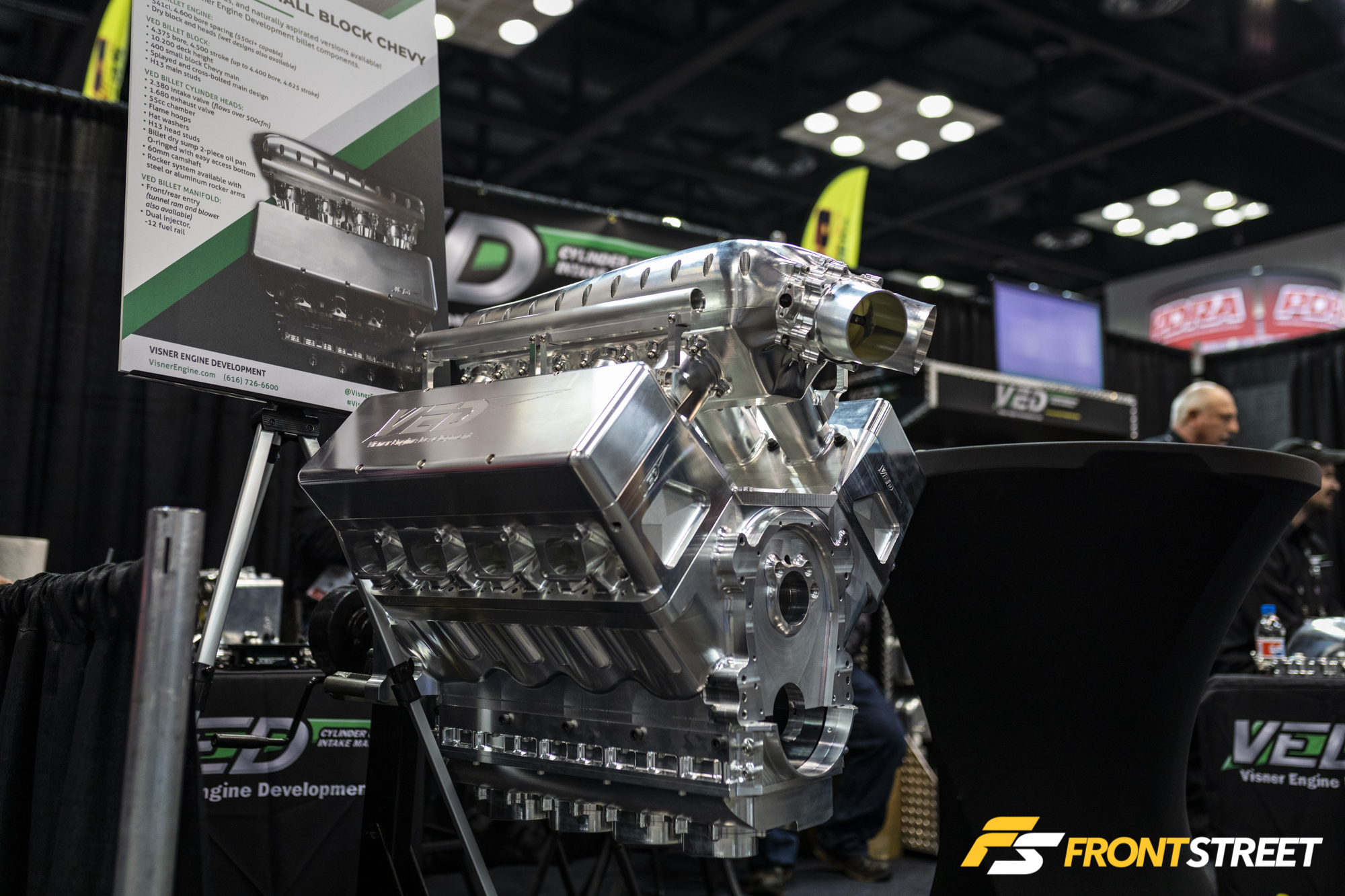
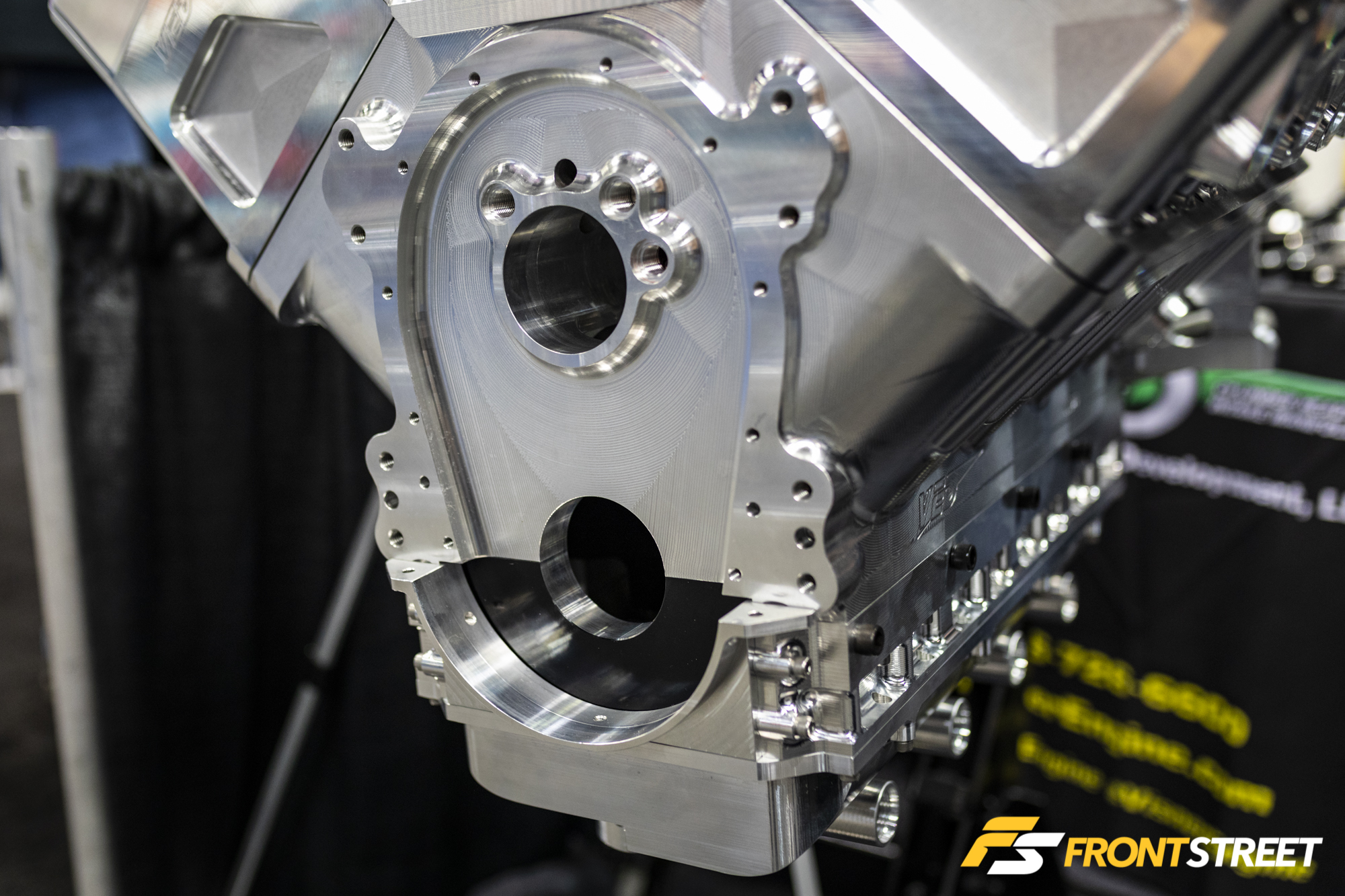


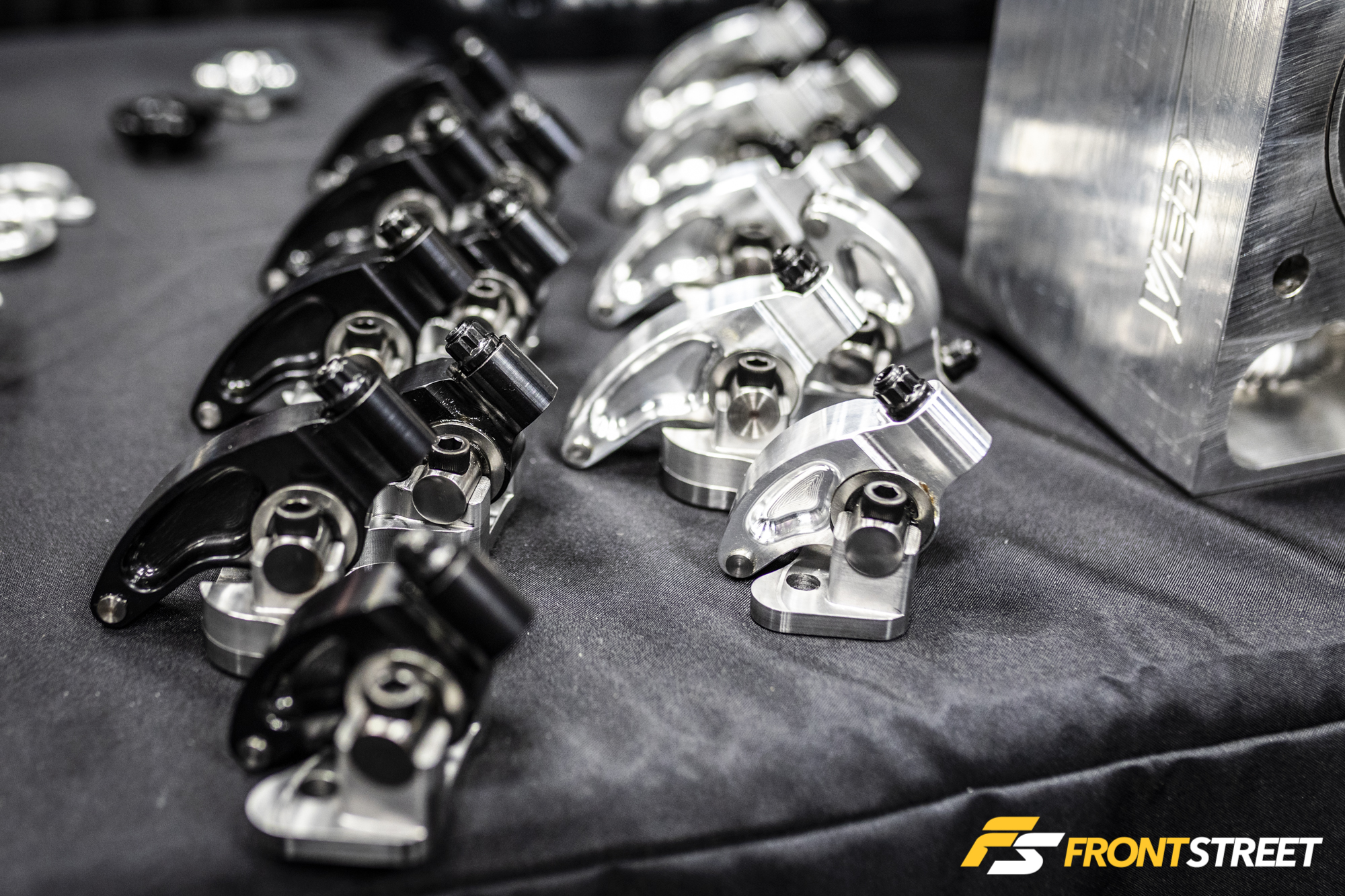
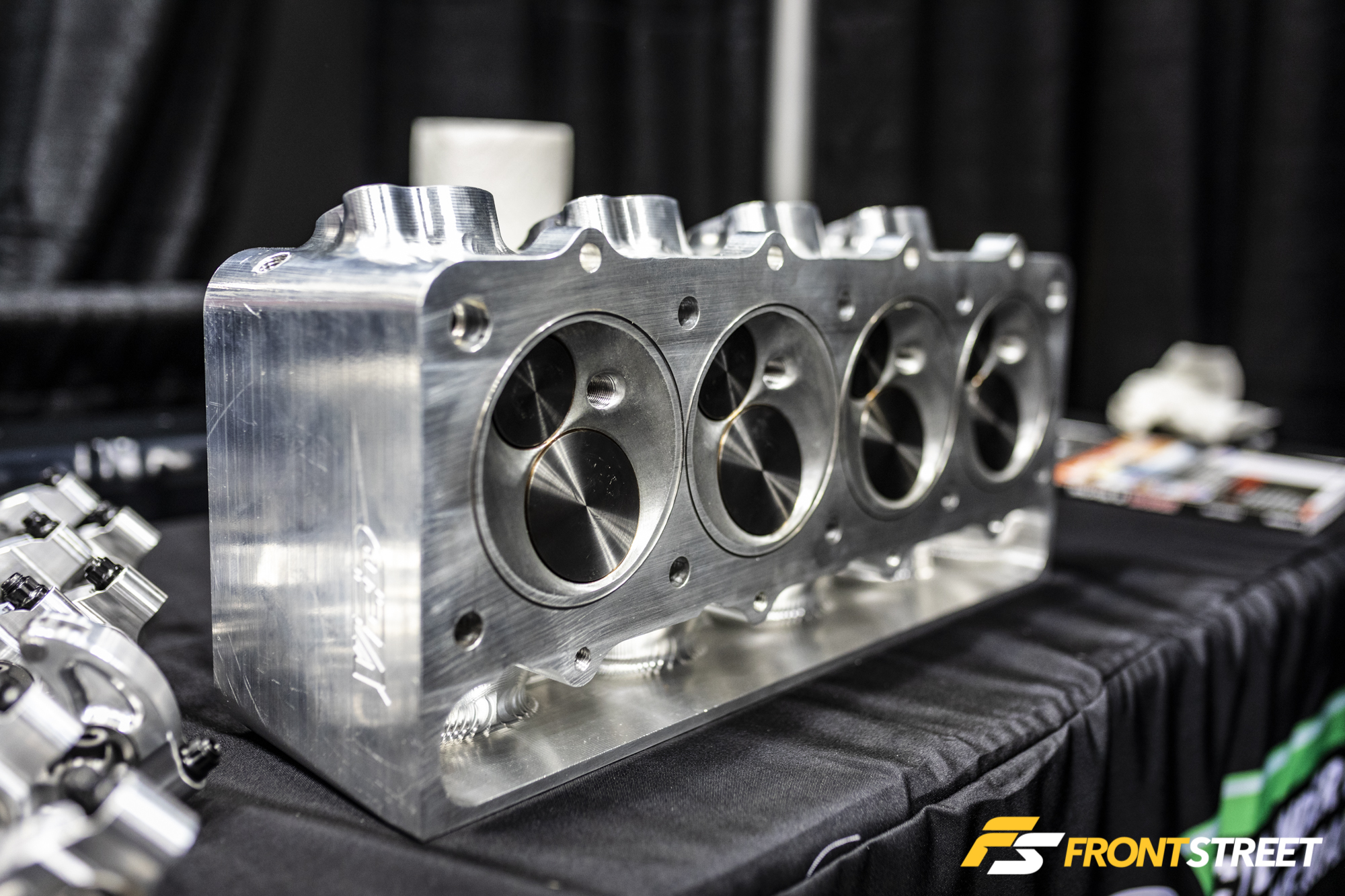
The 4.600-inch bore-space small-block billet Chevy engine from Visner Engine Development is seriously impressive. Dave Visner and his team have developed this engine for classes like Outlaw 10.5, drag radial, and other outlaw-style drag racing classes. By shifting the small-block Chevy architecture from its traditional 4.400-inch bore centers to the larger 4.600-inch spacing, more room becomes available for larger valve sizing and larger bores, yet remains considered a small-block for rules purposes. The block is available in a traditional water-cooled design, or solid for ultimate durability in drag applications where methanol fuel is used. The cylinder heads were designed in-house as is the intake manifold and rocker setup, and configuration like ring package, stroke, and bore size are all determined with the customer’s input depending on the type of racing the engine will be used in. It will measure out anywhere from 460 to 560 cubic inches depending upon internals, with a max 4.400-inch bore and 4.625-inch stroke. 2.380-inch intake and 1.680-inch exhaust valves mean big power; we understand the engine to be capable of nearly 4,000 when all is said and done. Serious power from an engine shop that knows how to make it—Visner’s expertise ranges from NASCAR to Pro Stock.
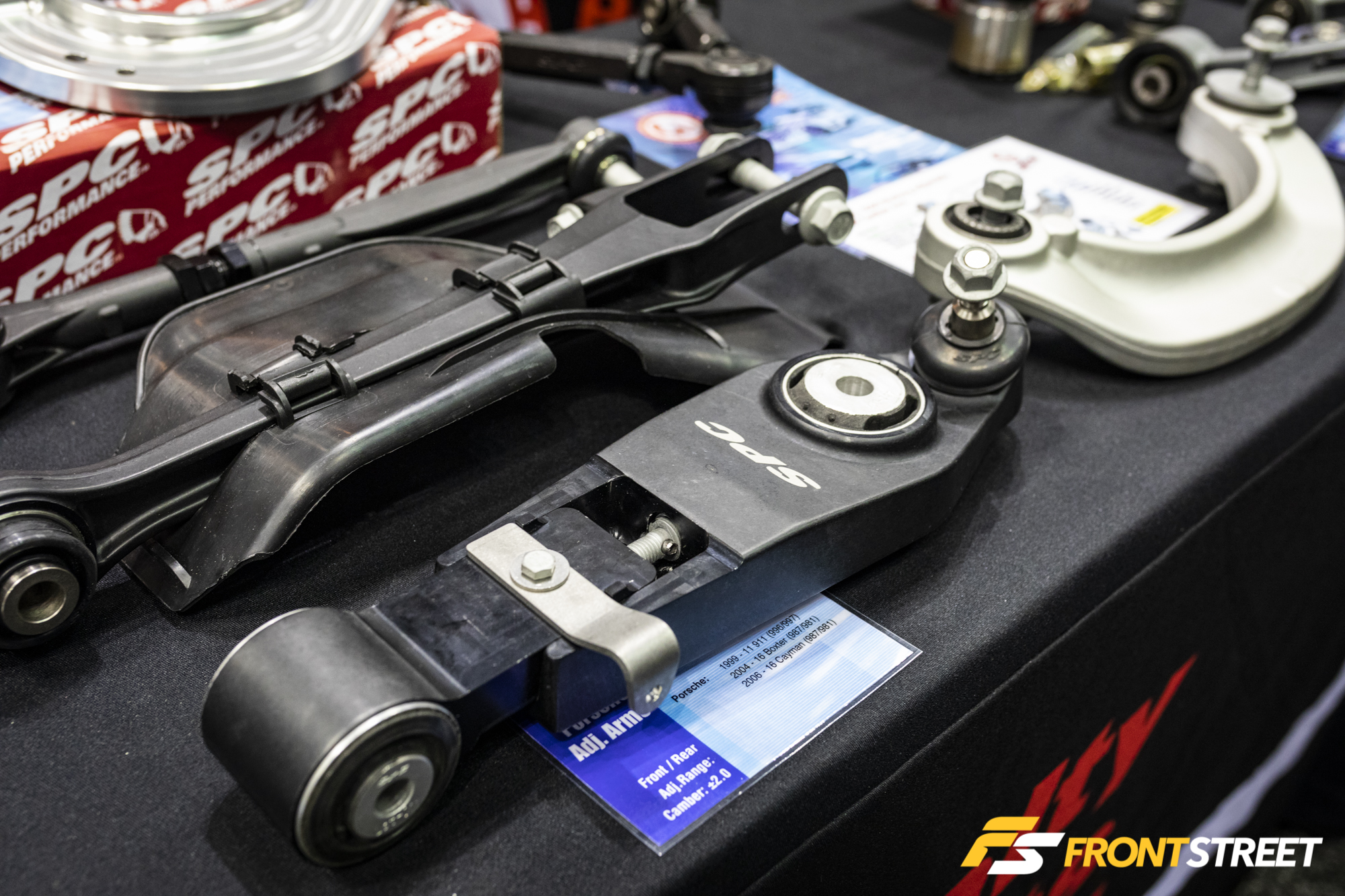
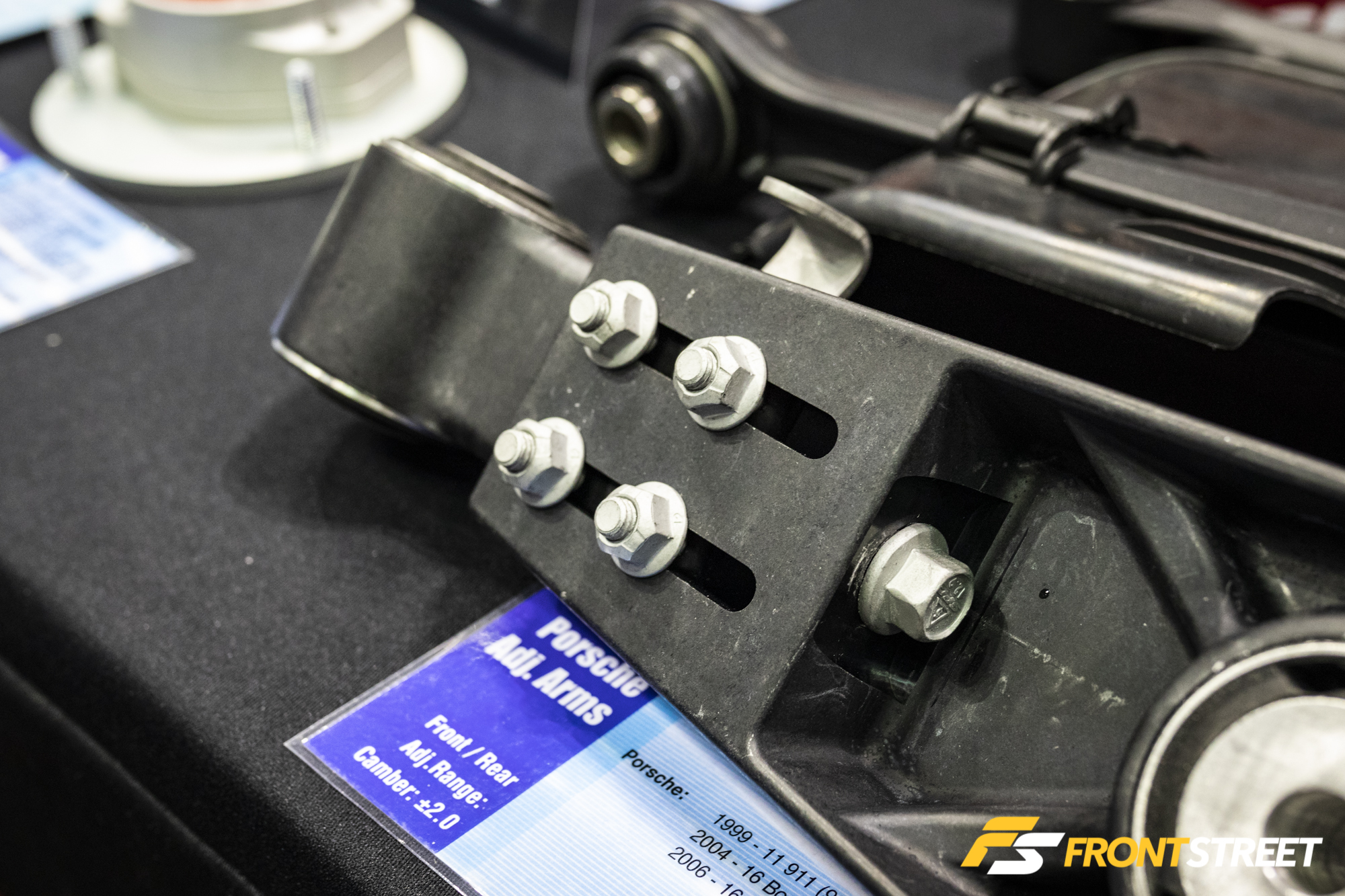
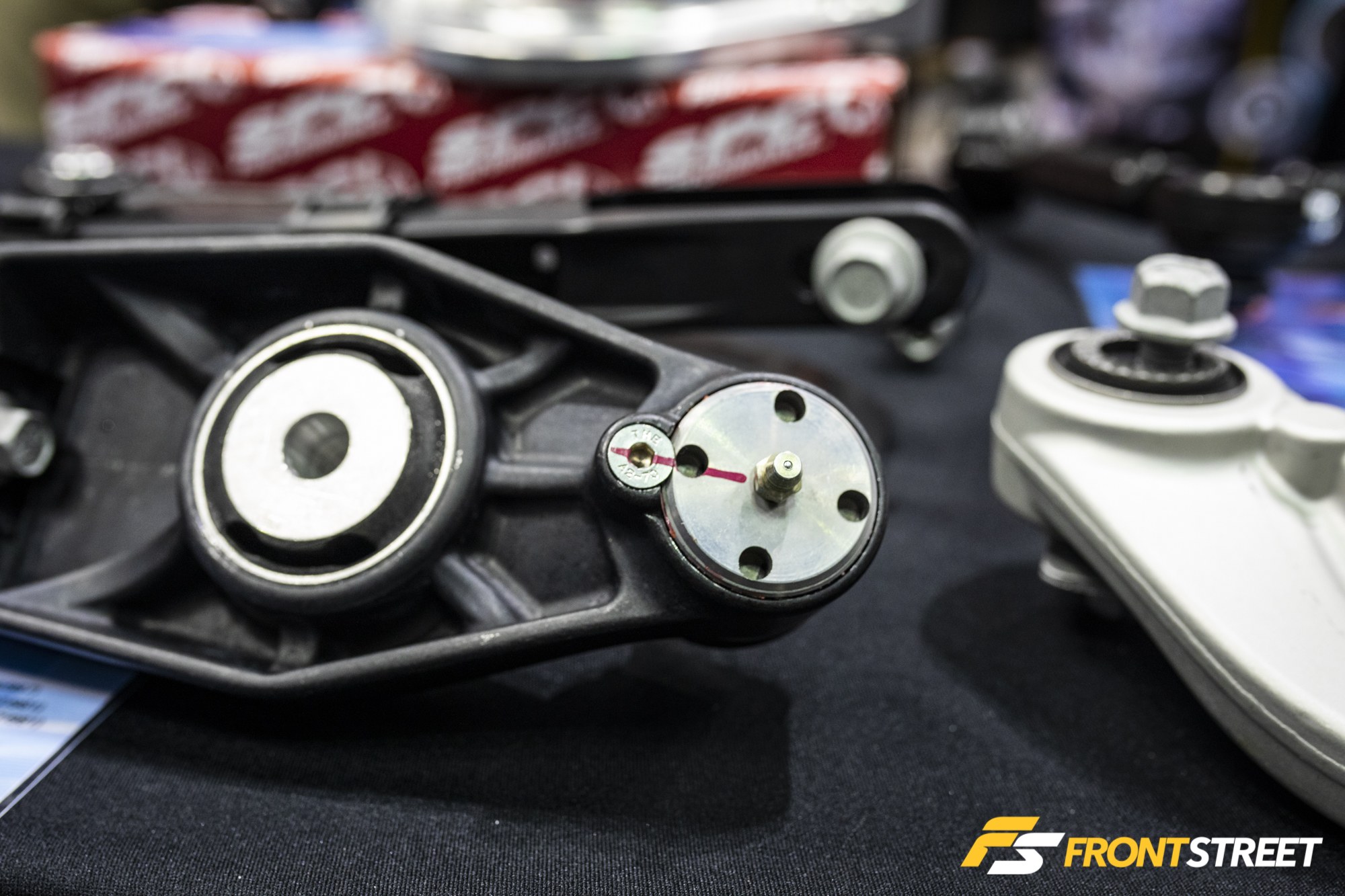
Alignment parts aren’t usually exciting, but they are important, especially when you’ve added a set of lowering springs or coil-overs. The 996/997 Porsche guys will appreciate these adjustable lower control arms from Specialty Products Company. They fit either the front or rear of the car; two pairs in total are required to do it right. Forged from 6061-T6 aluminum, they offer up to 2 degrees of on-car camber adjustment in either direction, and a rebuildable ball joint.


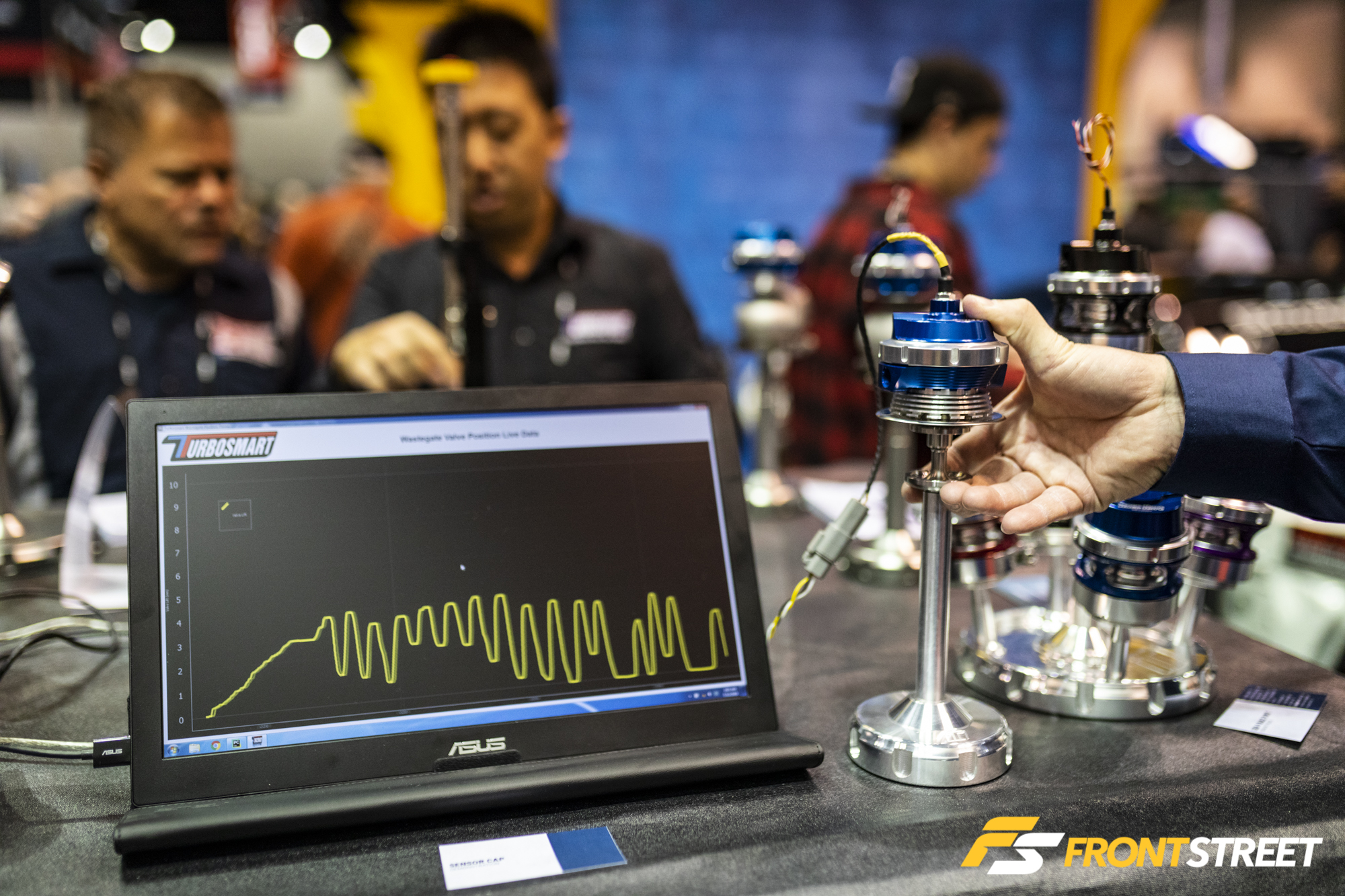
Turbosmart had a sweet display showing off the capabilities of its wastegate sensor position caps, which are critical to assist the vehicle tuner in diagnostics and other tuning duties. It was pretty impressive to see how quickly the logger responded when the test valve was actuated. They work on everything from the Ultra-Gate39 to the Power-Gate60—the company’s full lineup.
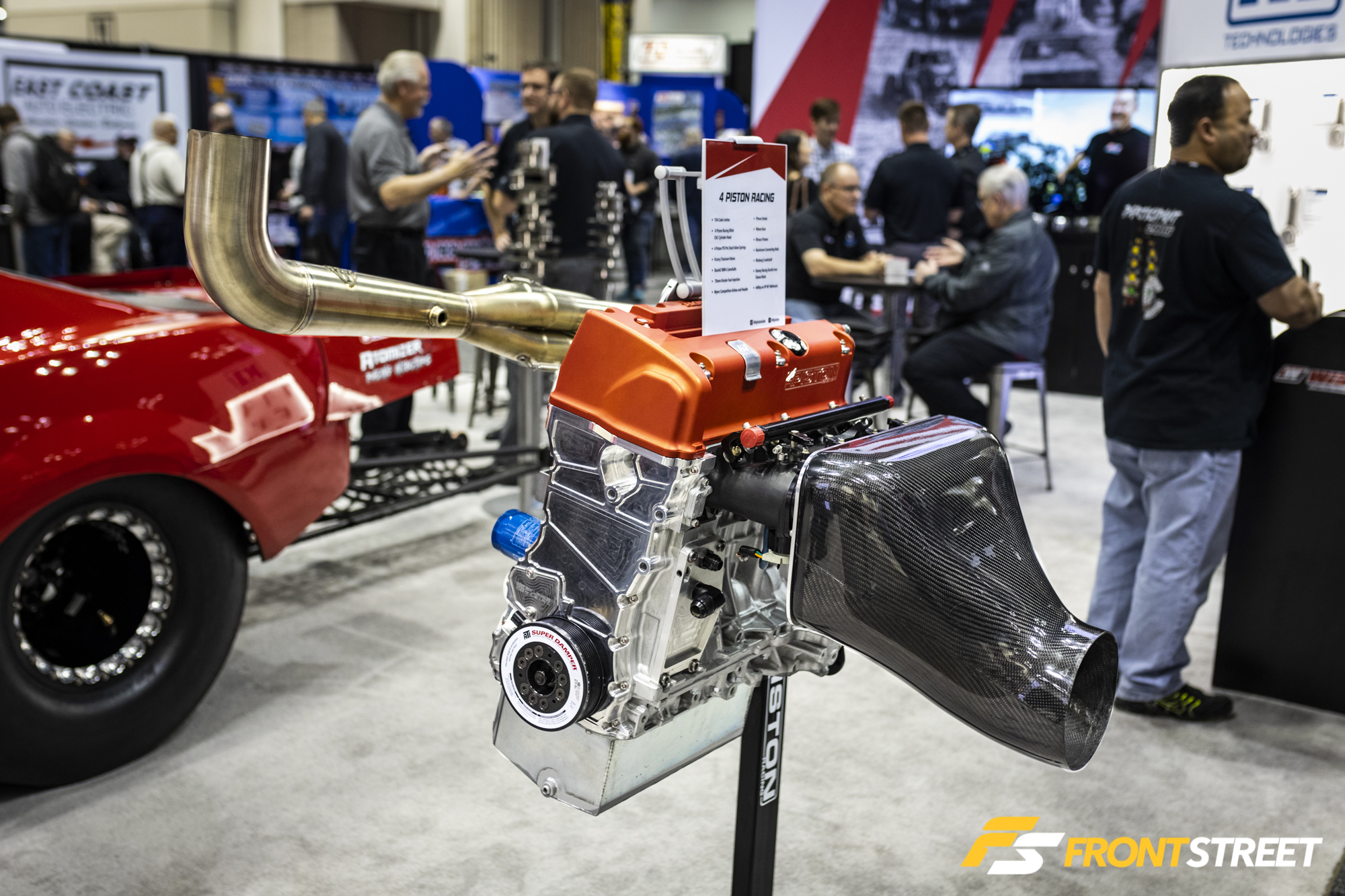
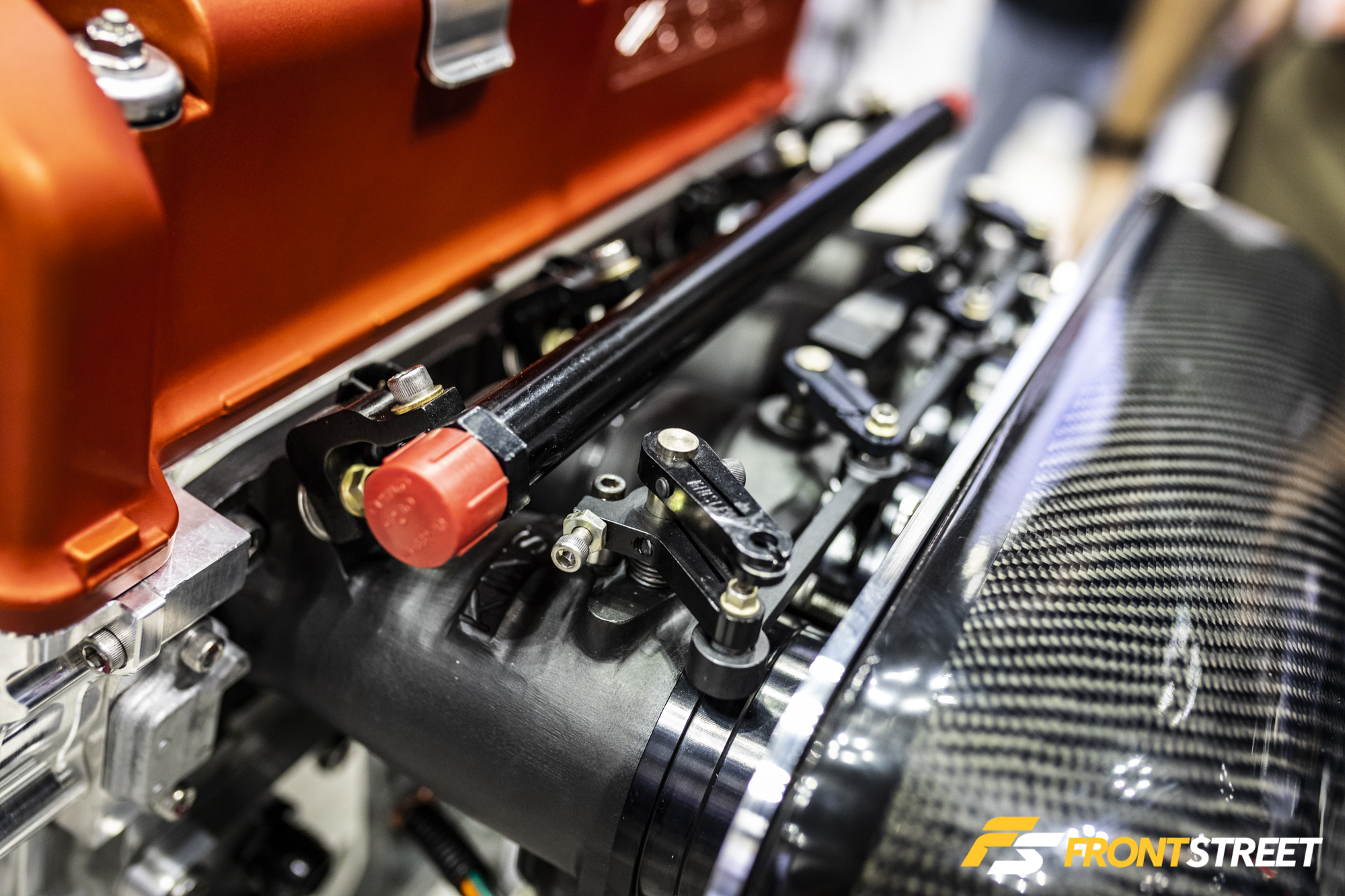
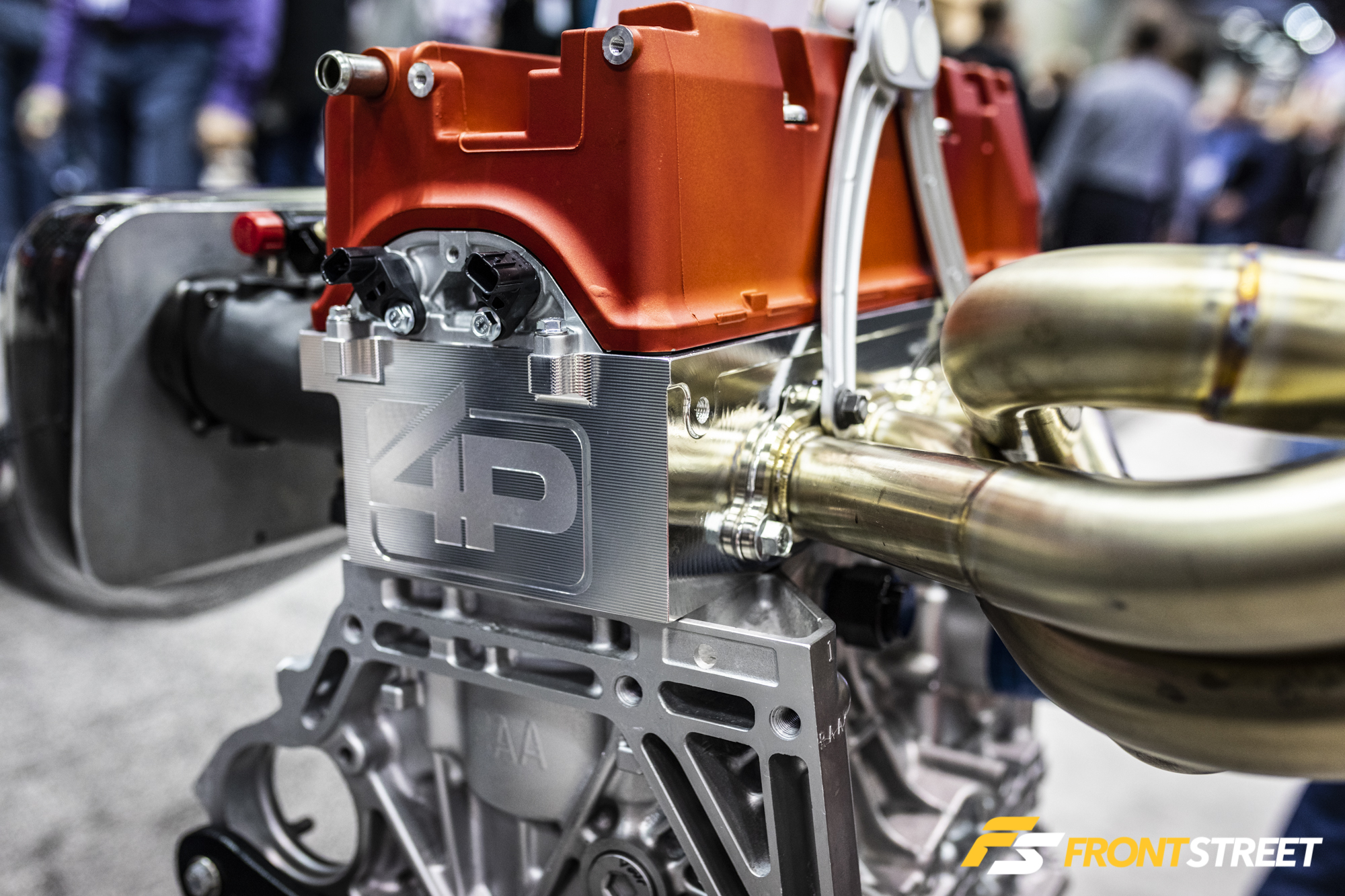

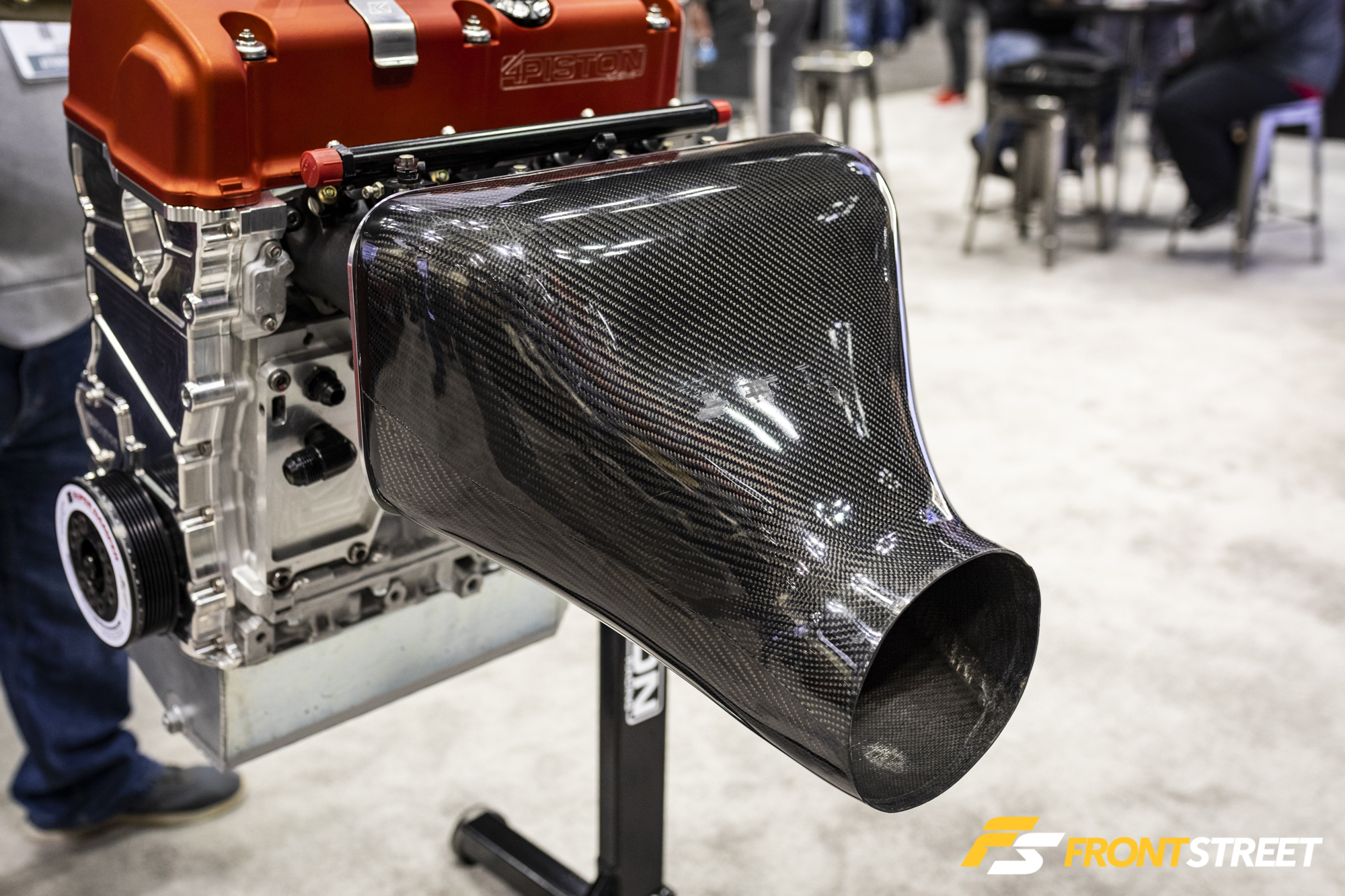
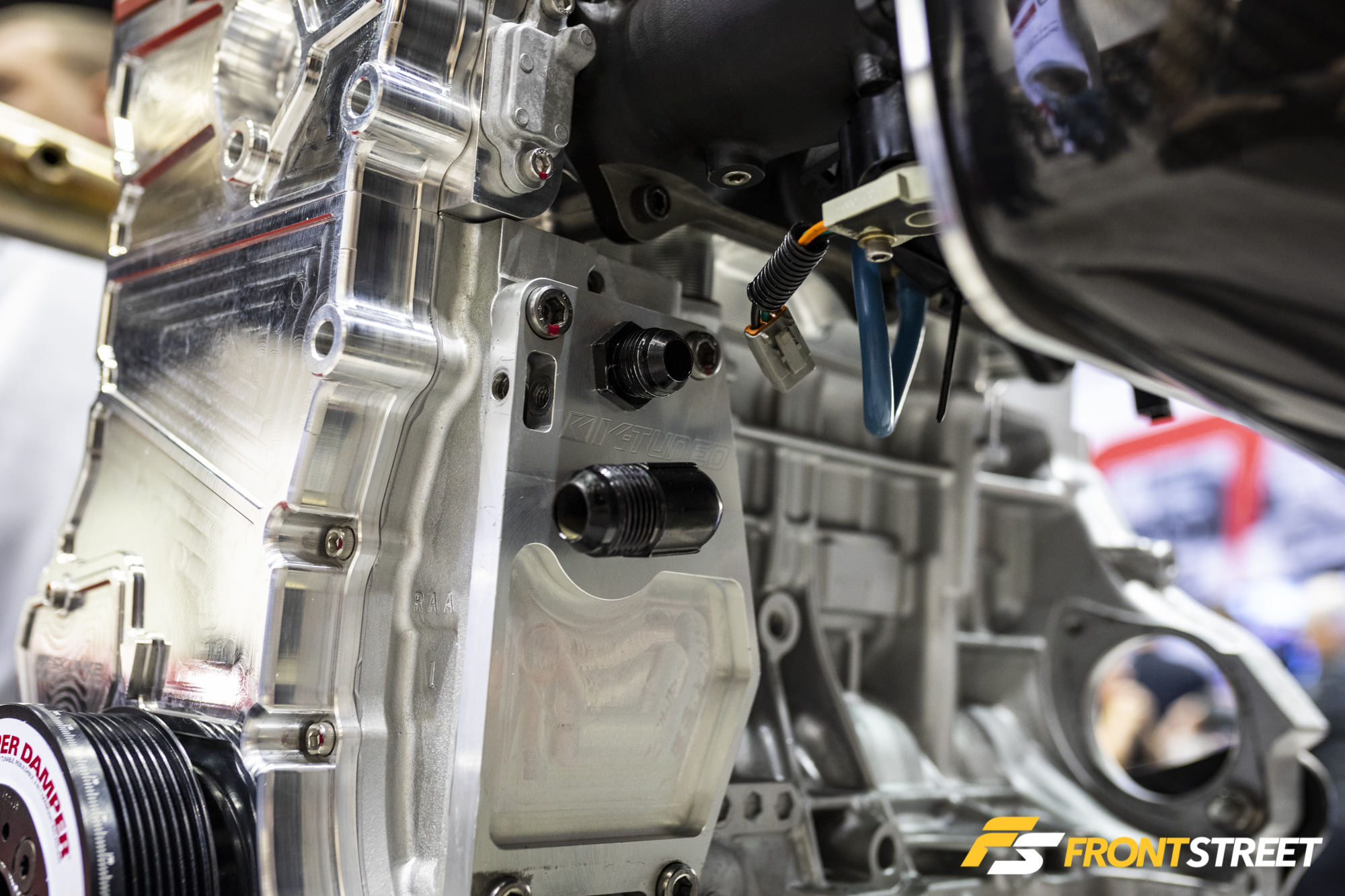
It wasn’t just the domestic guys taking advantage of the beauty of billet, though. 4 Piston Racing developed this 154ci billet deal with a Ramey Racing block which uses ductile iron sleeves, a 4 Piston Racing billet CNC cylinder head, 99mm stroke, and 90mm bore. Inside there’s a set of Wiseco pistons, aluminum rods, a Winberg crankshaft, and a set of Skunk2 BMFx cams.
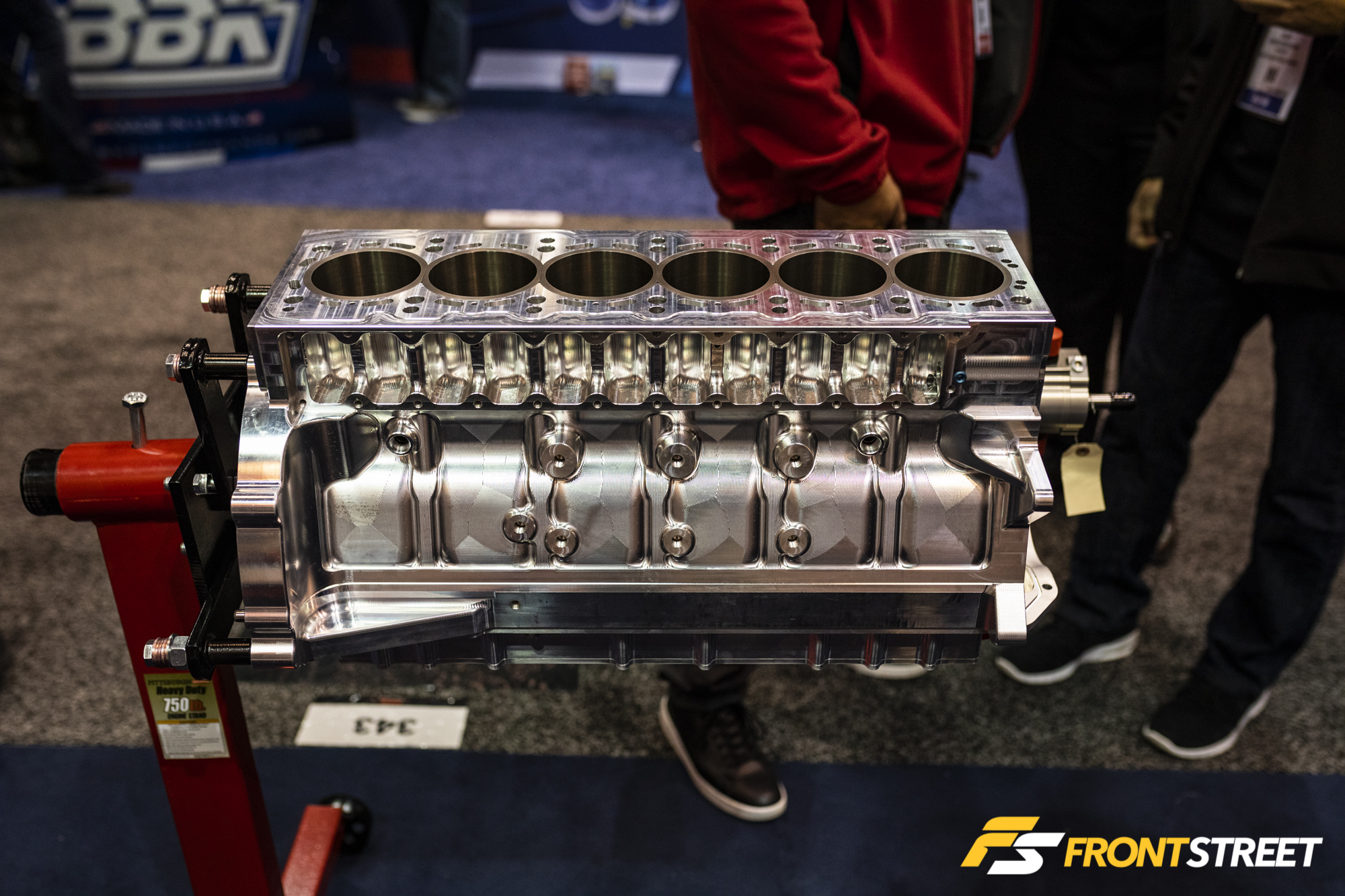
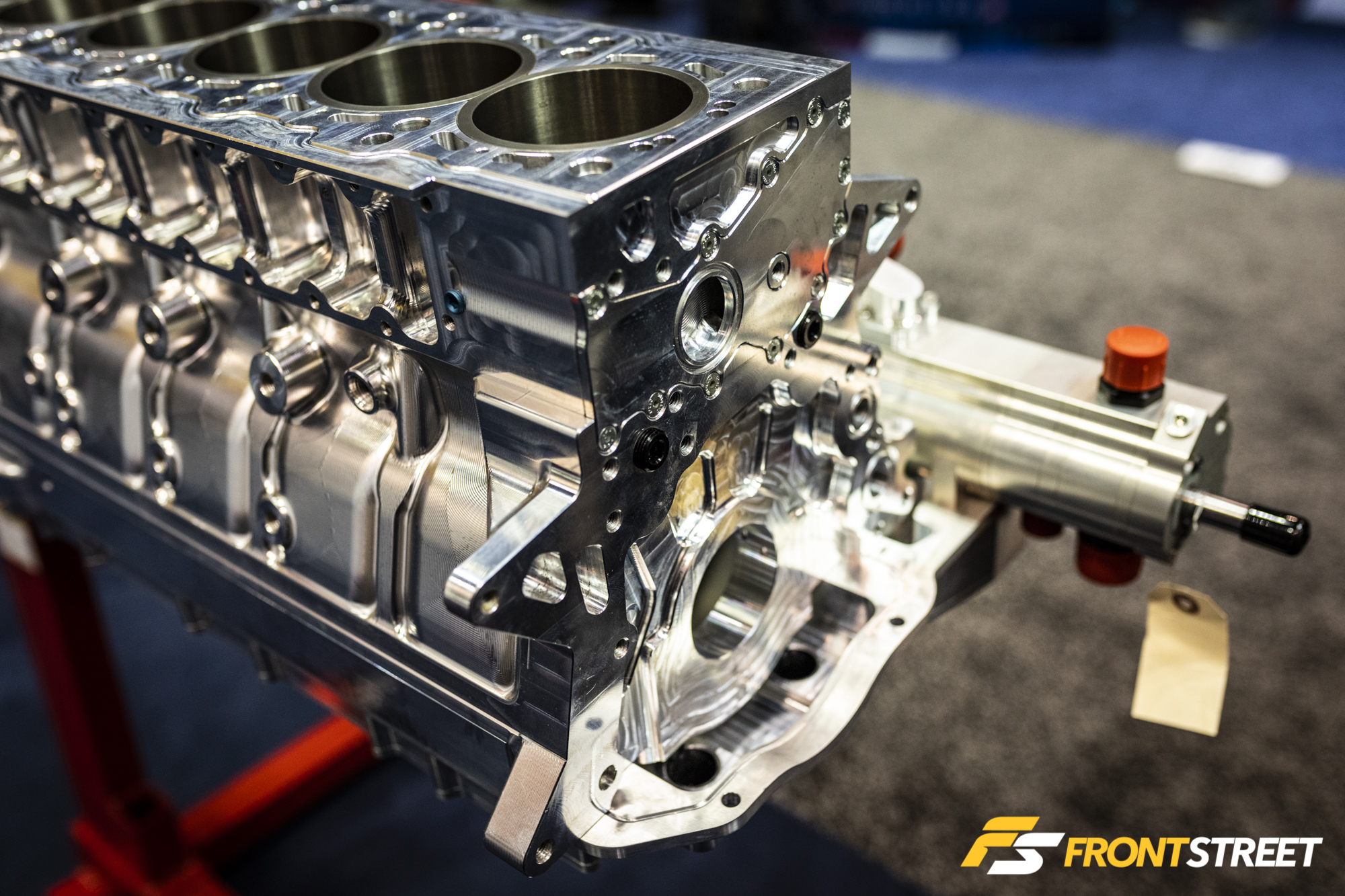
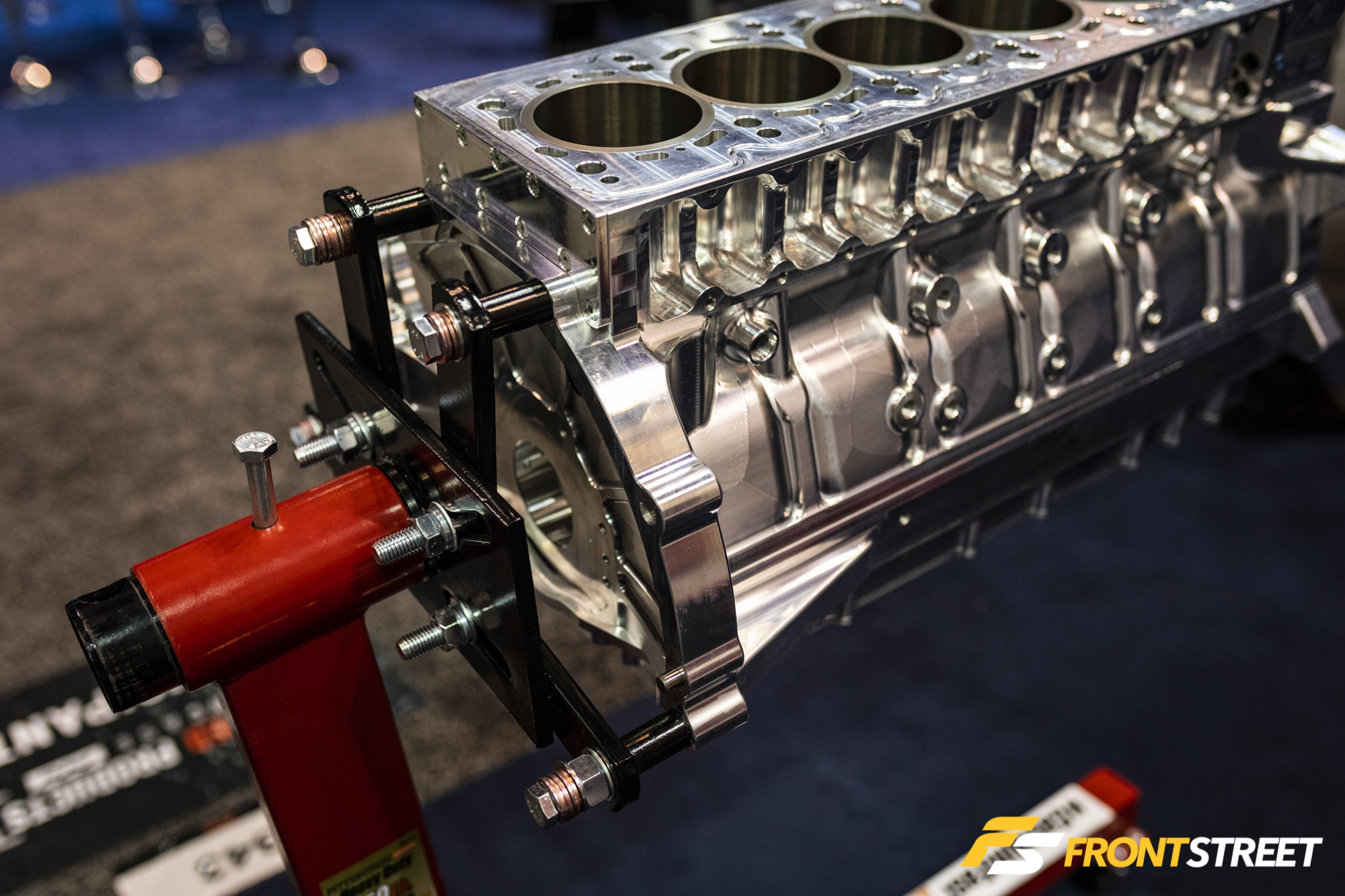
More in the form of this billet 2JZ block from Bullet Race Engineering: it’s rated to 2,500 horsepower and features four-bolt main caps, sleeves, and is capable of an 88mm bore dimension. 6061 alloy, and a wet or dry deck option is available, along with a full-solid configuration for drag-only applications. I poked around this one for a while and it looks to be a really nice piece.
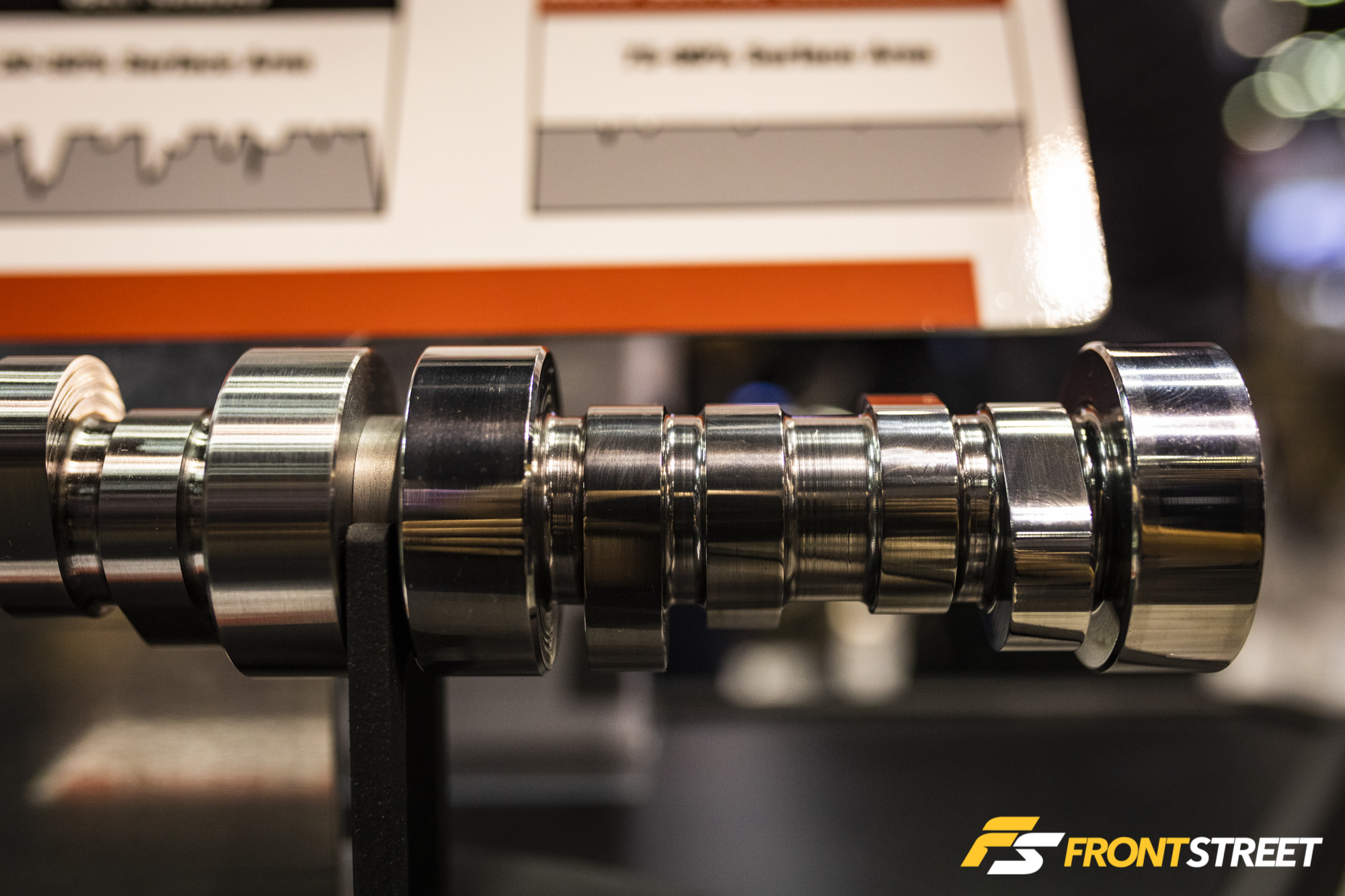
Comp Cams has been talking about its Micro Surface Enhancement process all year long, and they had a camshaft on-hand at the show to display the differences between traditional camshaft grinding (left side) and an MSE-enhanced camshaft (right side). Benefits include spreading the contact area across a far larger surface, which allows for higher spring loads and ultimately better durability. Think of it in terms of the comparison between the surfaces of a vinyl record and a compact disc, and you’ll have an idea of how vastly different it appears in person. All we know is that Comp’s Billy Godbold, along with EFI University’s Ben Strader (who you’ll meet in an upcoming Front Street One Question article), worked an LS engine to hit 11,000 rpm with one of these bad boys inside.
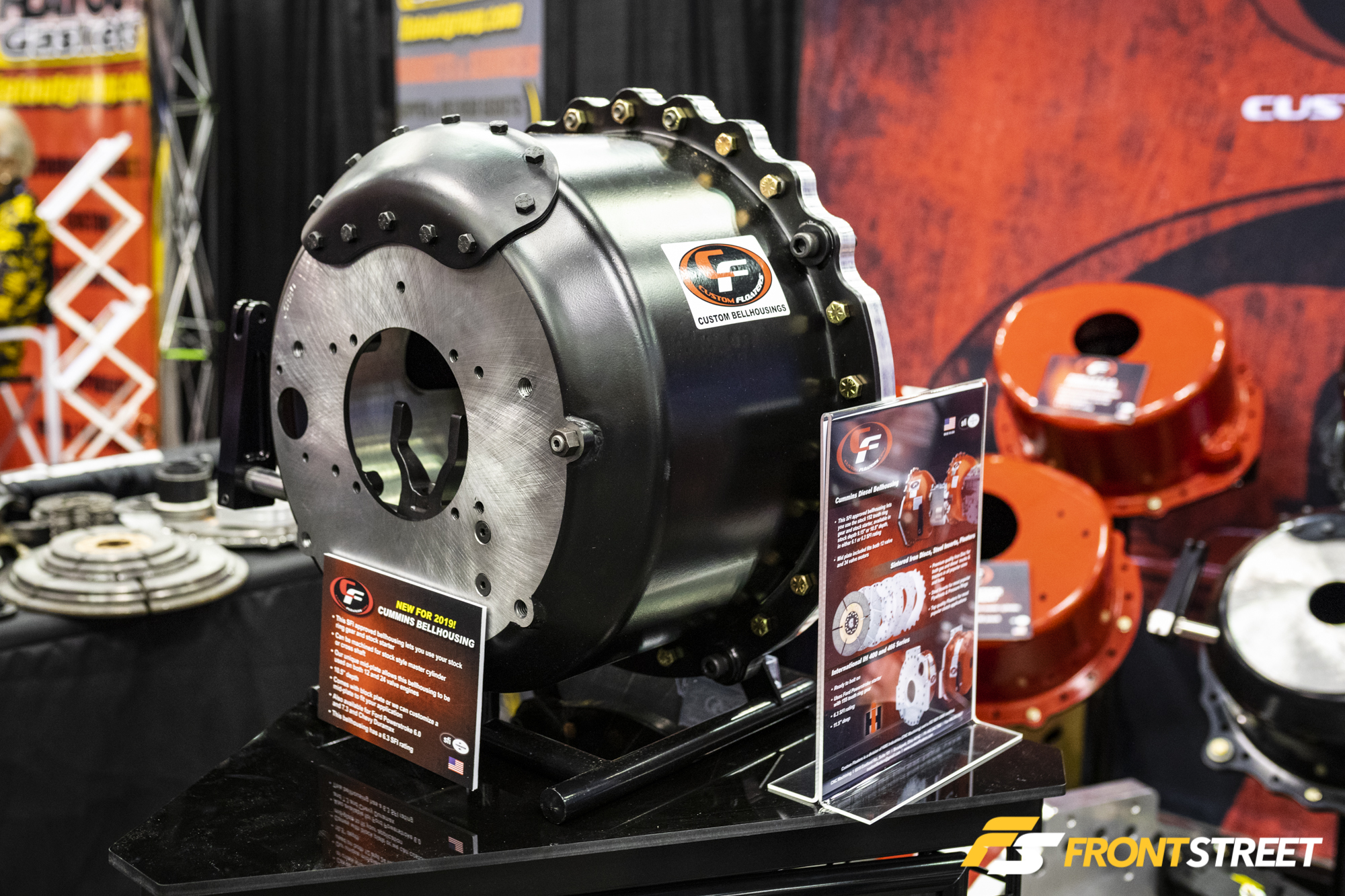
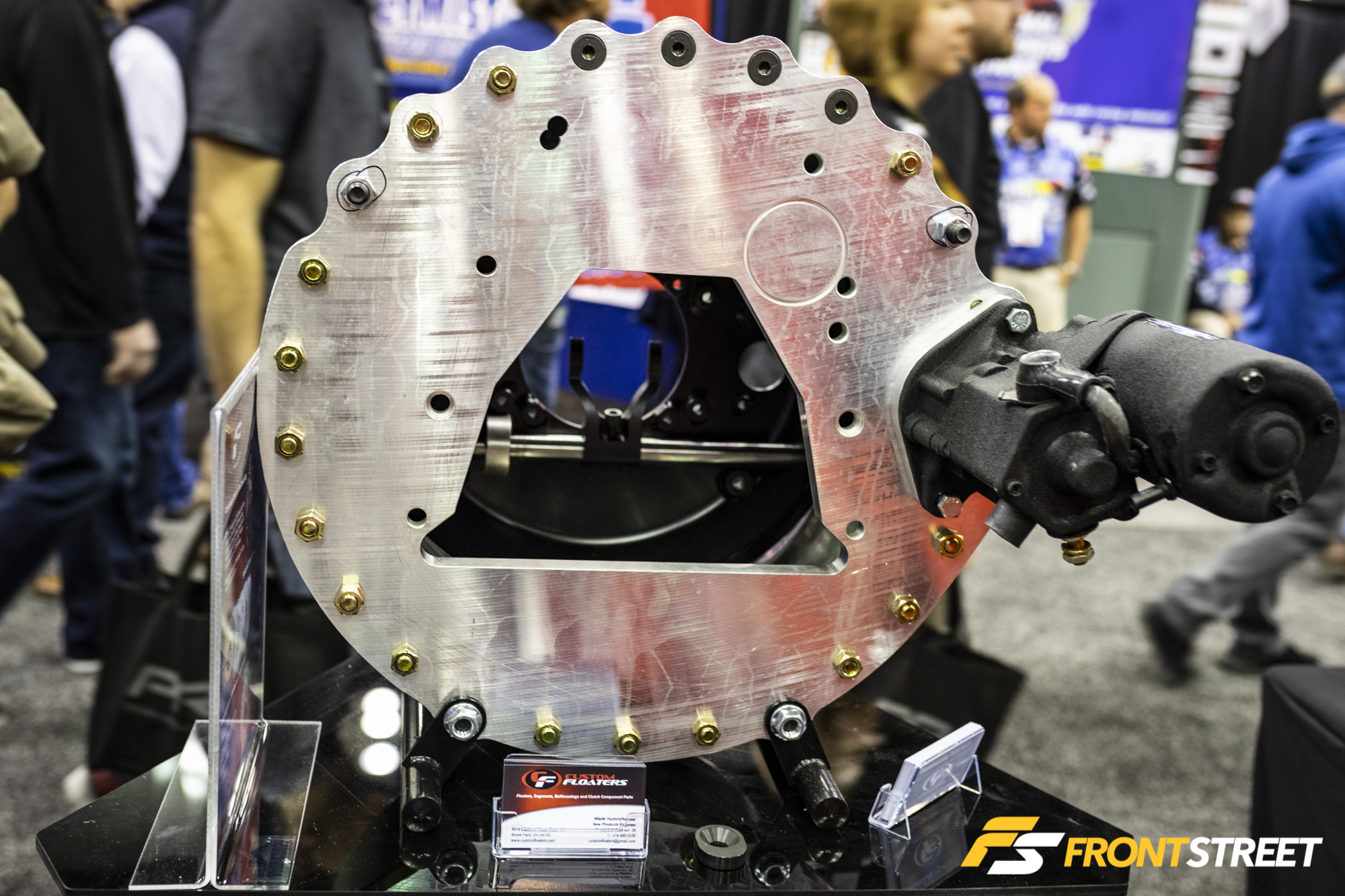
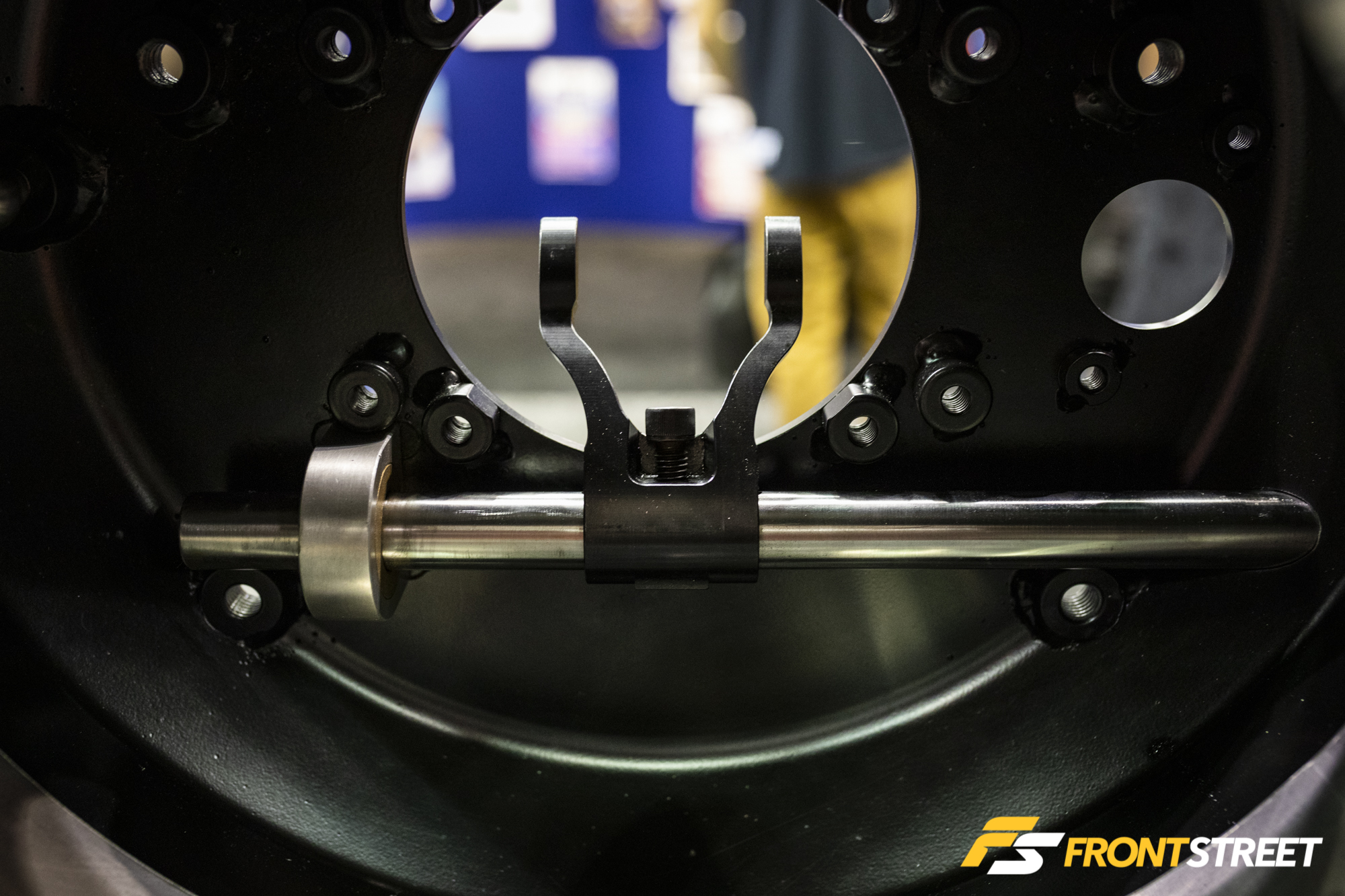
The monster Cummins bellhousing from Custom Floaters caught my eye due to its beefy appearance—the company says it’s 6.3 SFI-approved and will let you retain your stock ring gear and starter from a 12V or 24V Cummins. The mid-plate design is unique to this bellhousing and allows for that possibility, and it comes with a block plate. Typically used in drag racing, this can will allow you to use all the power you’ve got without fear of a clutch explosion exiting the bellhousing.
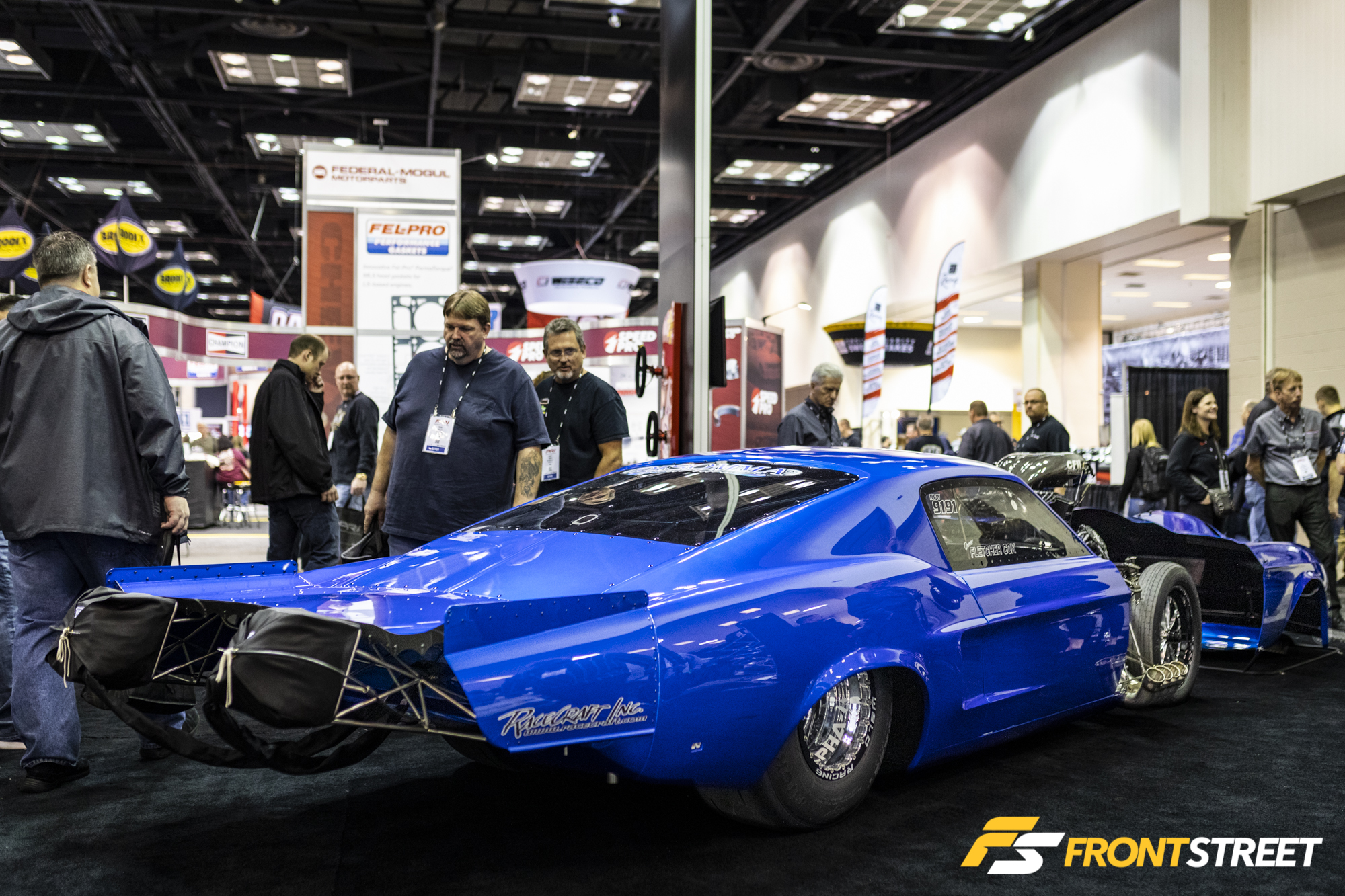
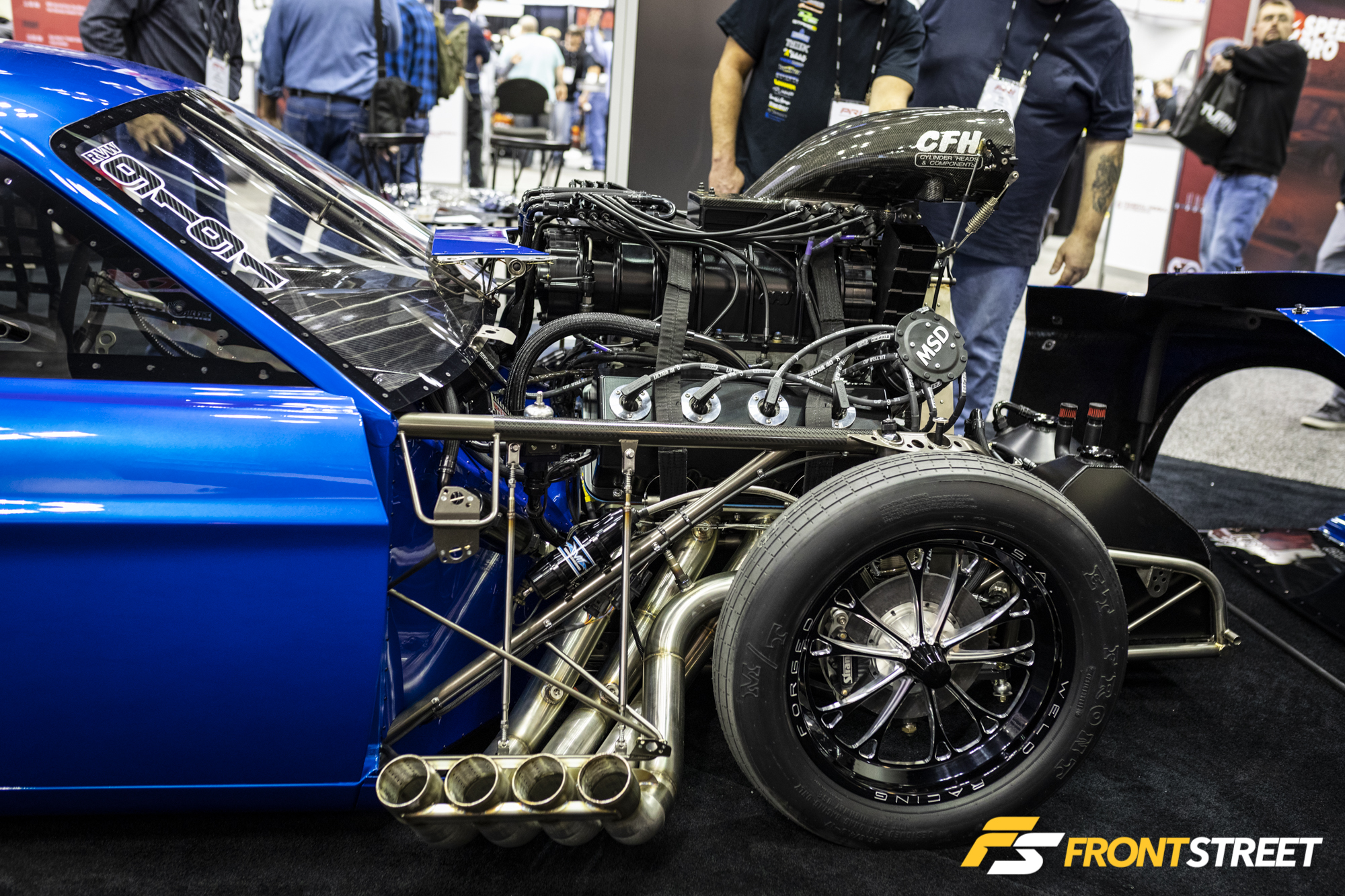
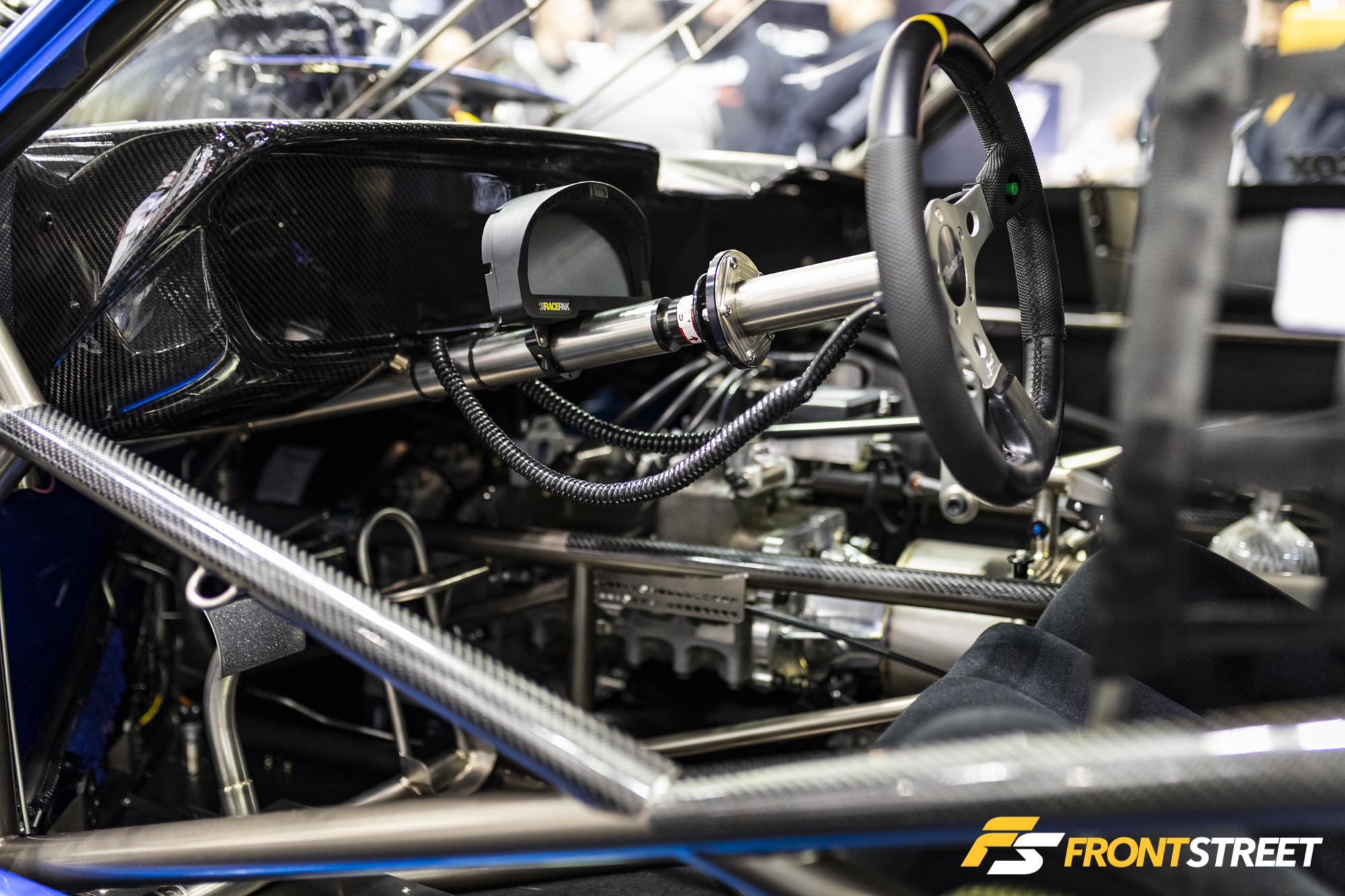
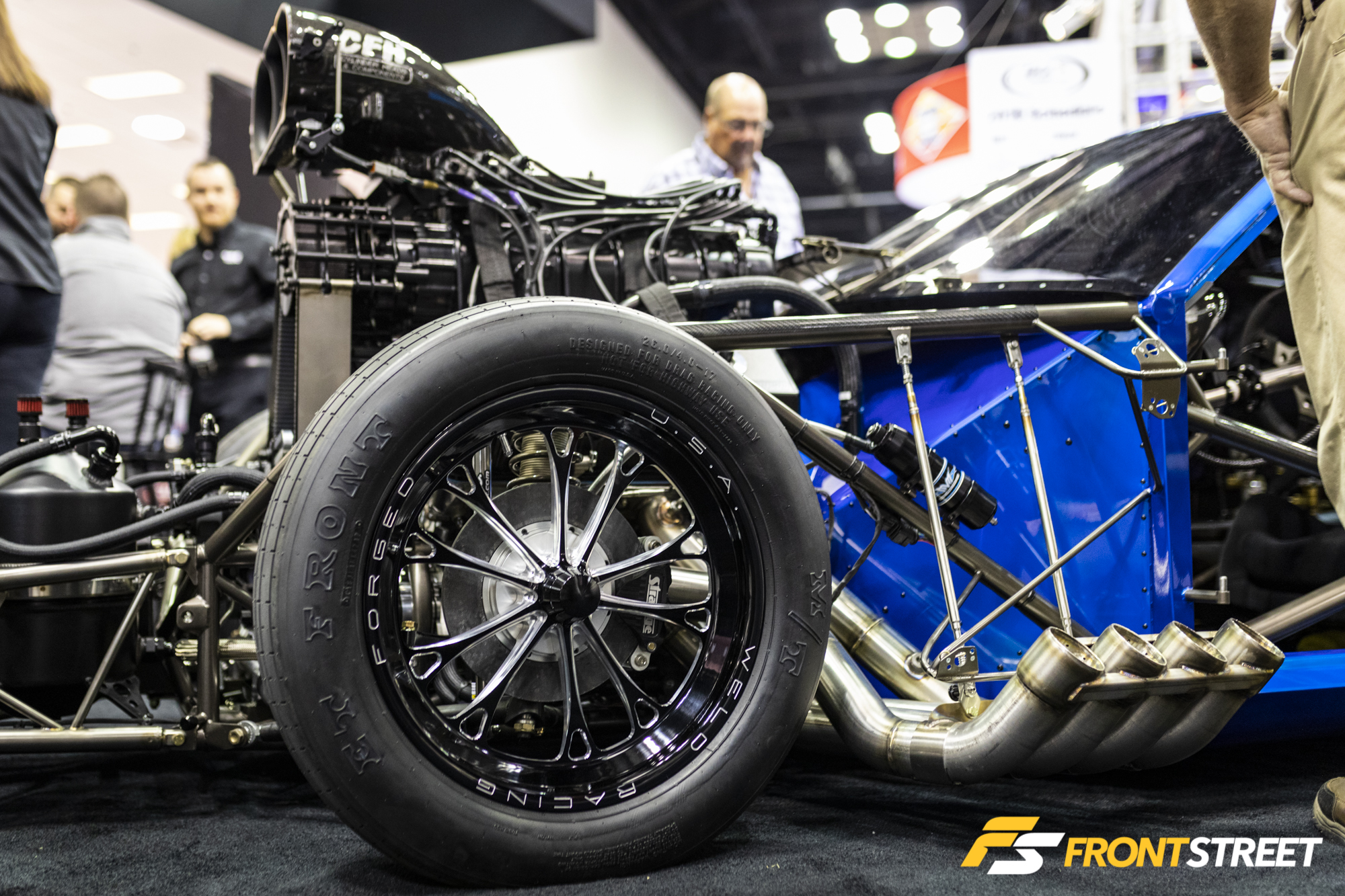
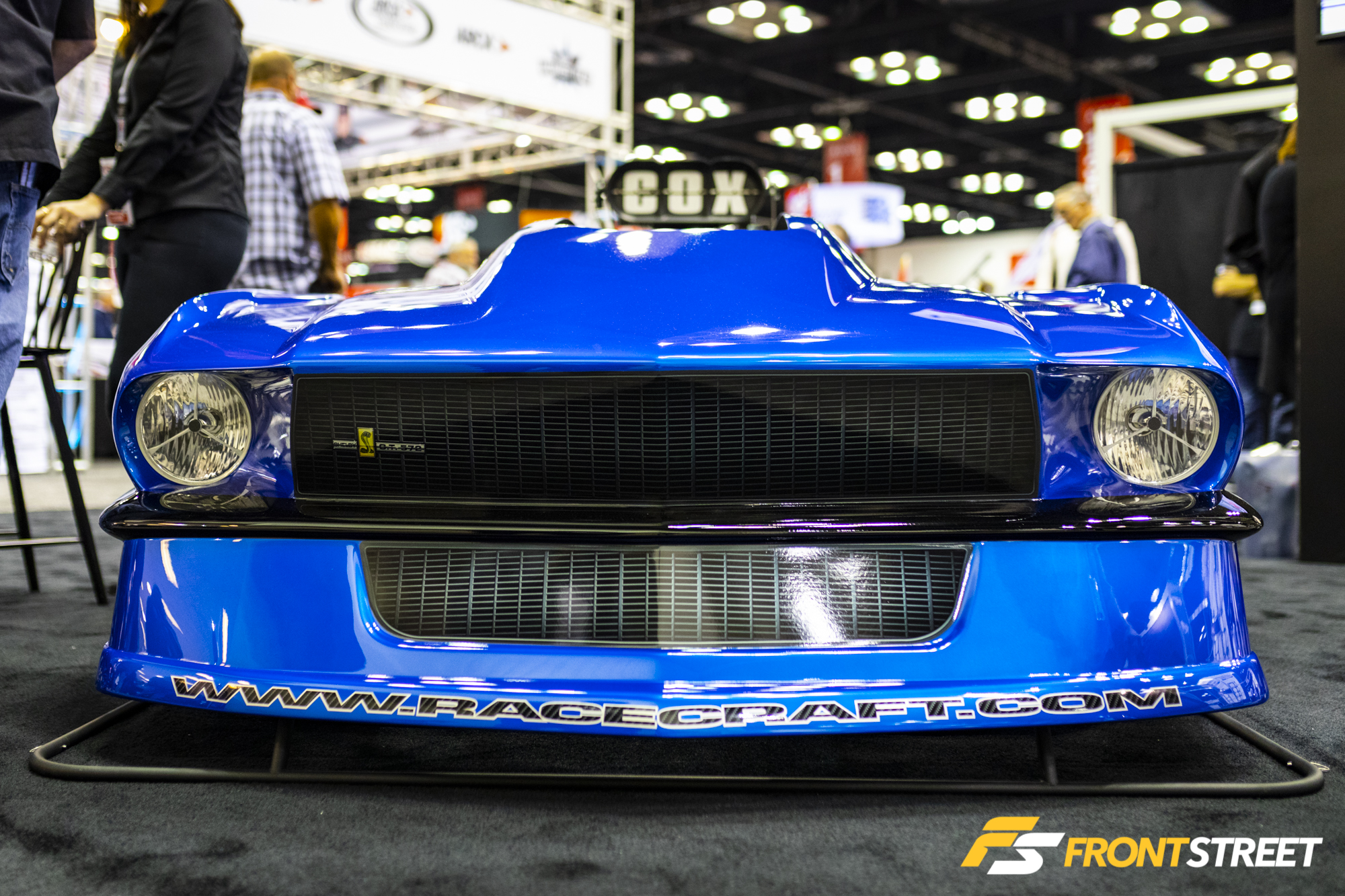
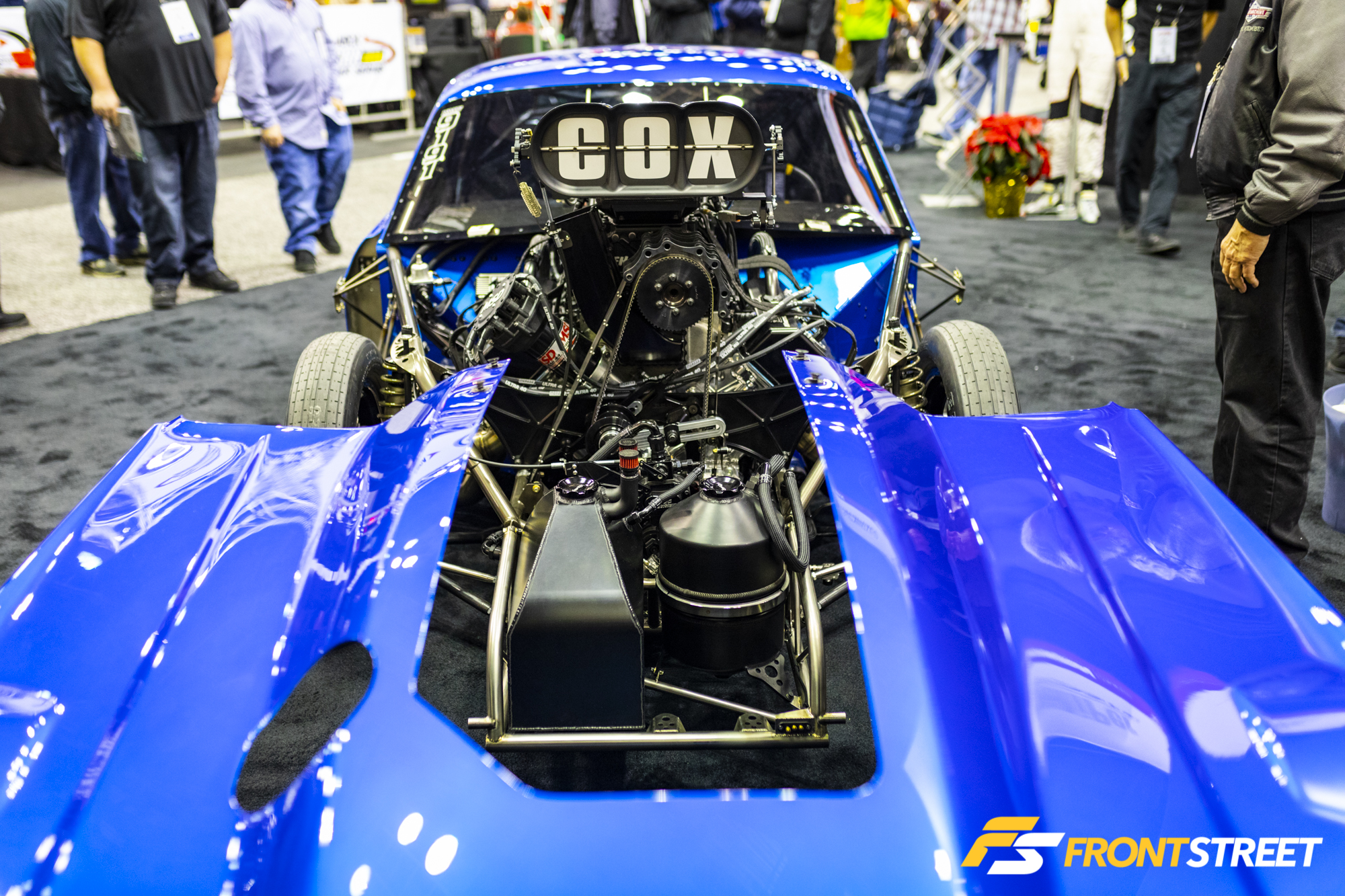
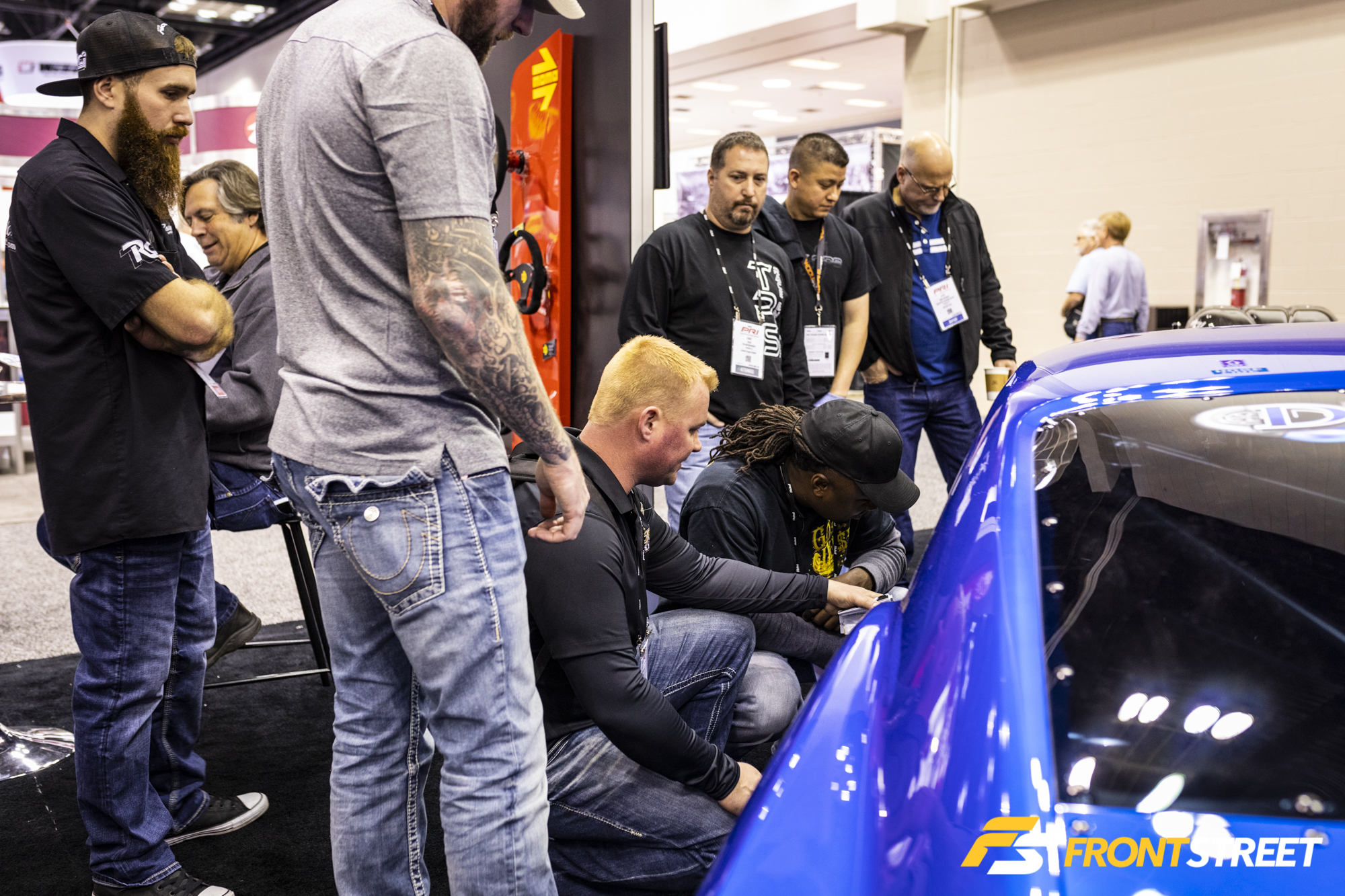
Fletcher Cox’s new 1967 Racecraft-built Mustang is designed for Radial Vs. The World competition, and stole the show. All week long, the Weld Wheels booth was full of people checking out the car and its wild appearance. I had a moment to catch up with driver Shawn Ayers (bottom photo, kneeling), who told me he couldn’t wait to get the season started and get behind the wheel of this beast. The car, which was unveiled back in July, was making its first public appearance here at PRI to show off the Chuck Ford roots-blown DiSomma Racing Engines powerplant and Liberty 4-speed transmission. This car is a work of art from front to back, and it will hit the track publicly for the first time at Lights Out 10 at South Georgia Motorsports Park in February.
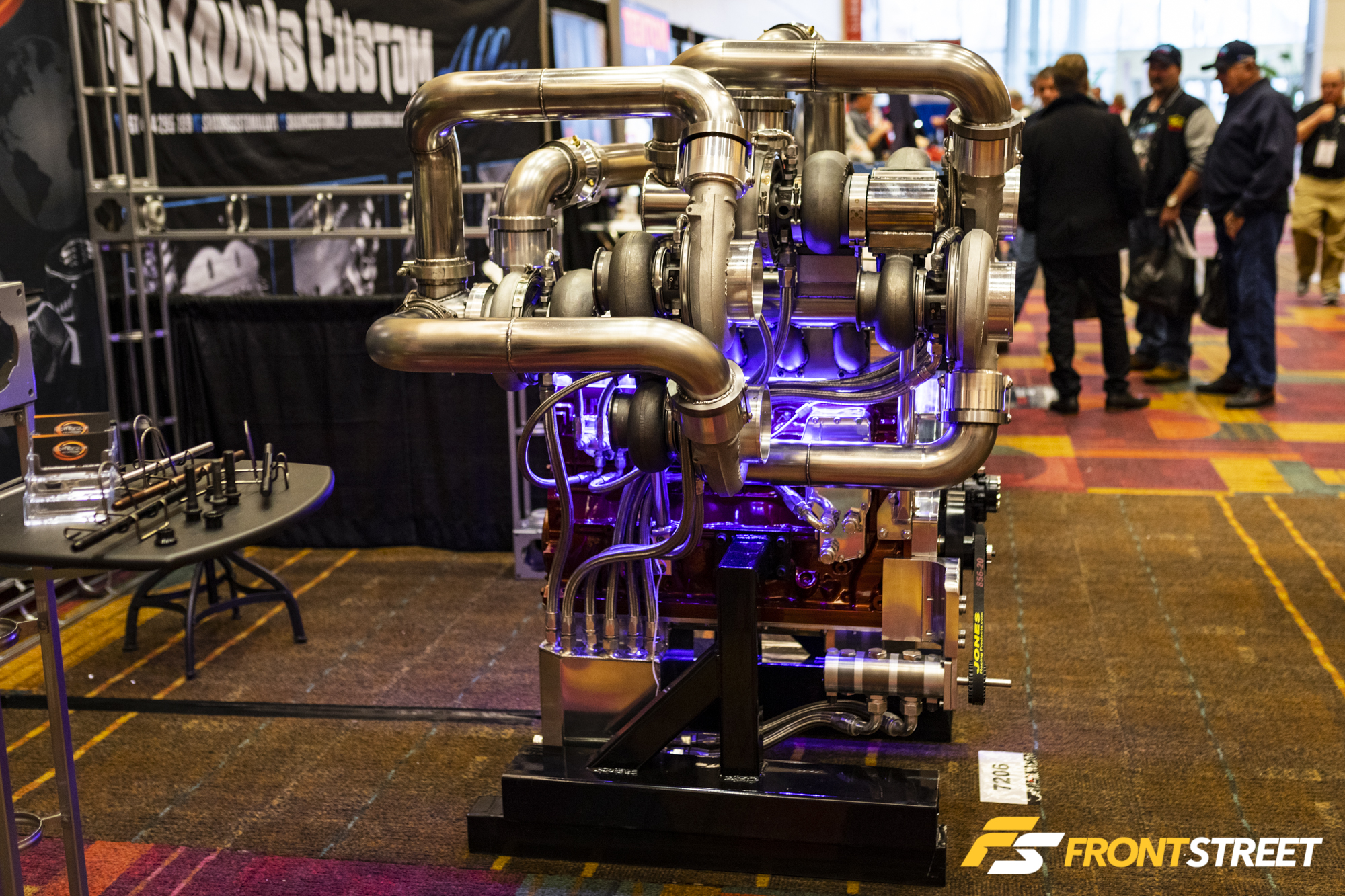
Six turbochargers and a whole lotta boost.
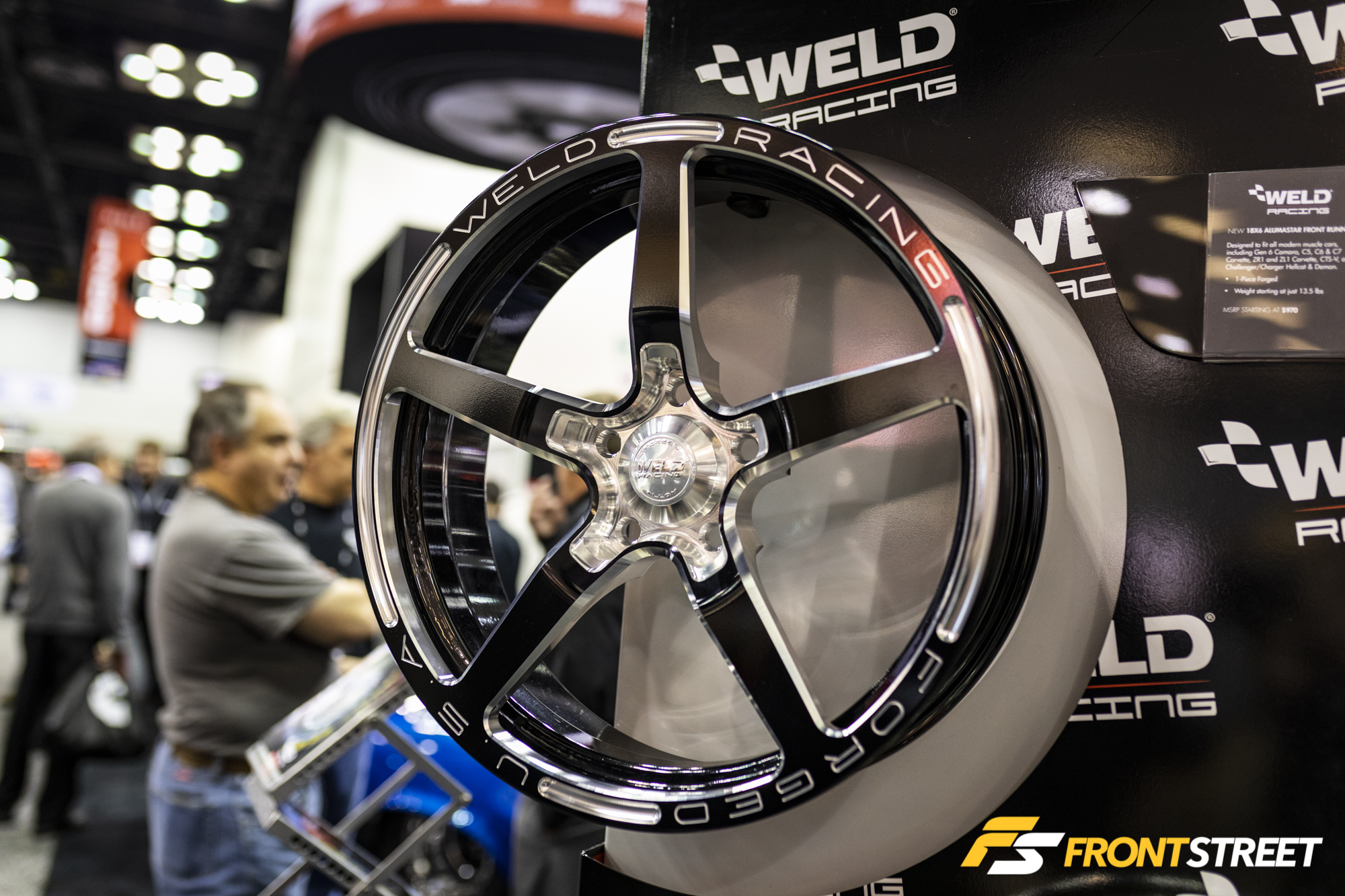
I also caught Weld’s all-new 18 x 6-inch Alumastar one-piece front-runner wheel, which is designed for use on all of the late-model Corvette, Mustang, CTS-V, Camaro, and Challenger machines outfitted with factory big brake kits. These things are a long time coming for the late-model crowd and it’s good to see them finally in production.
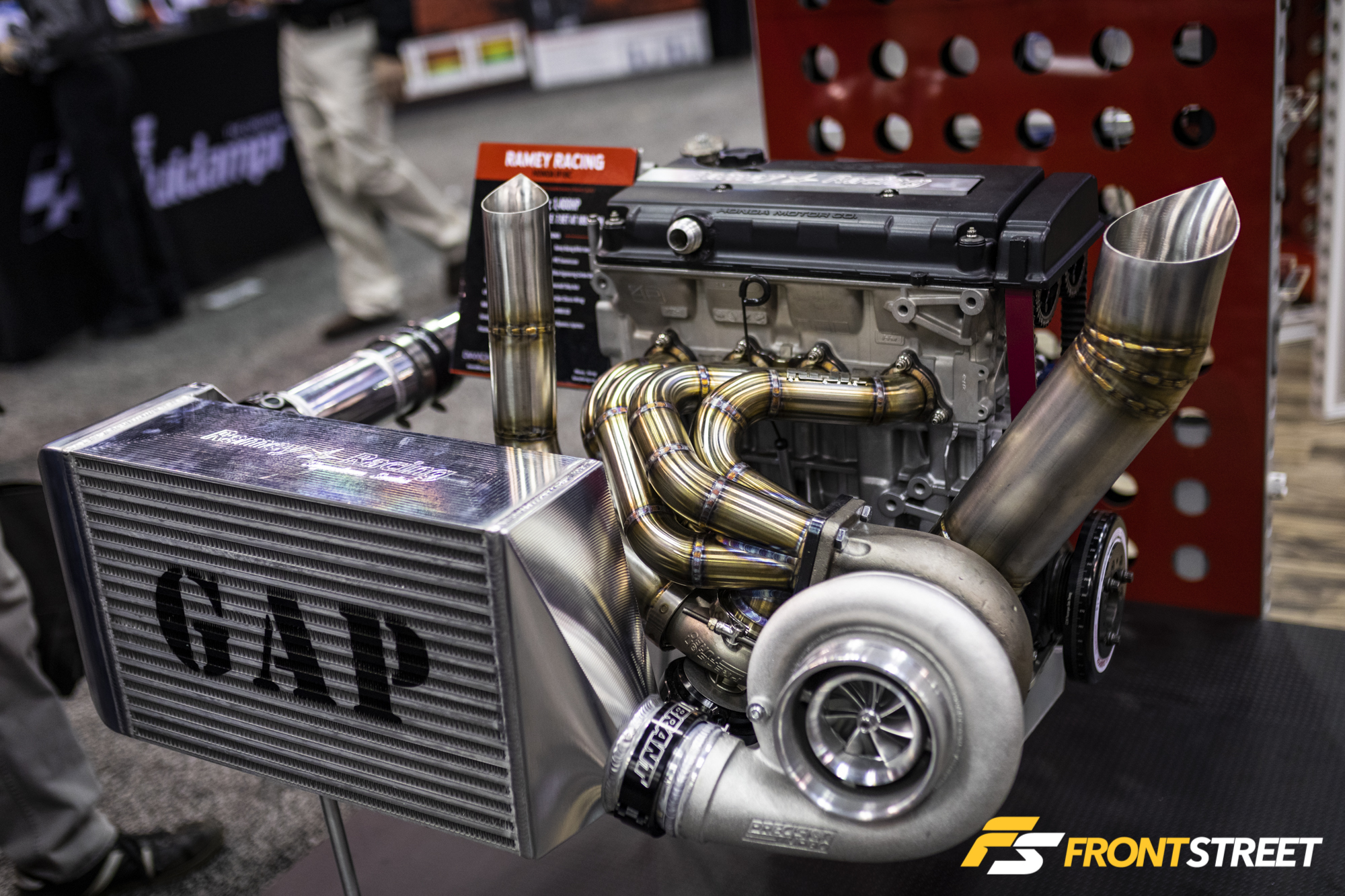
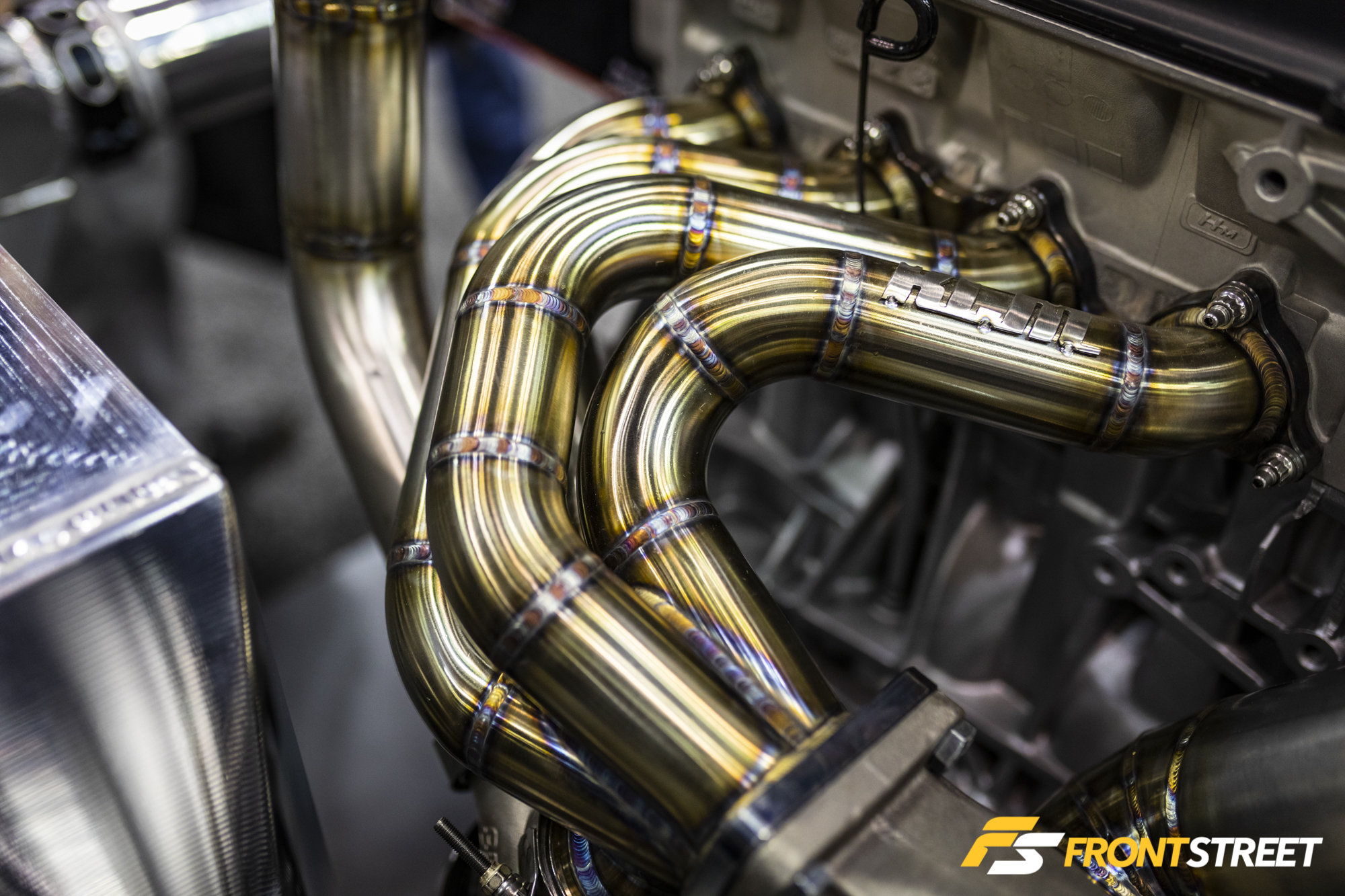
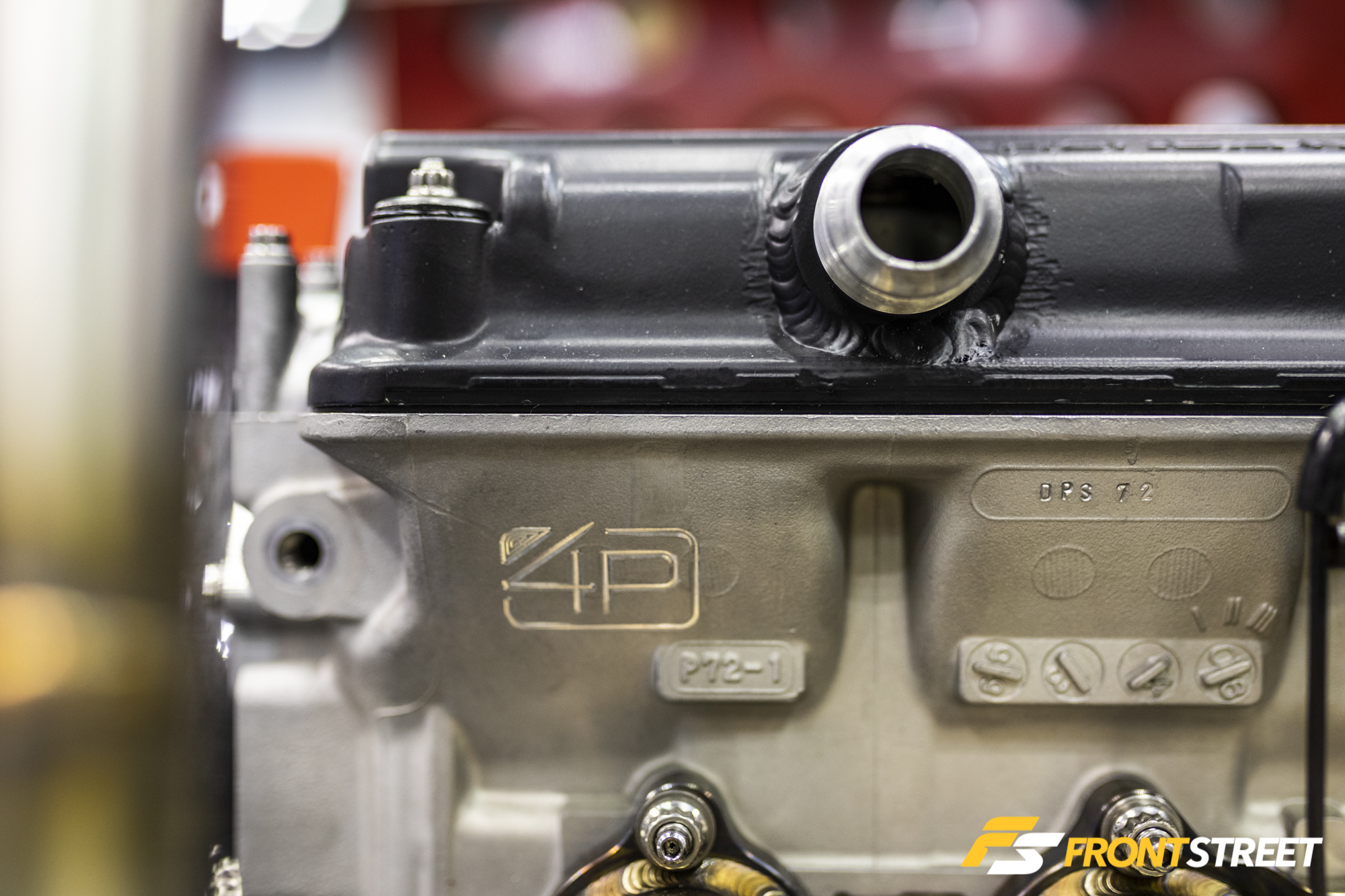
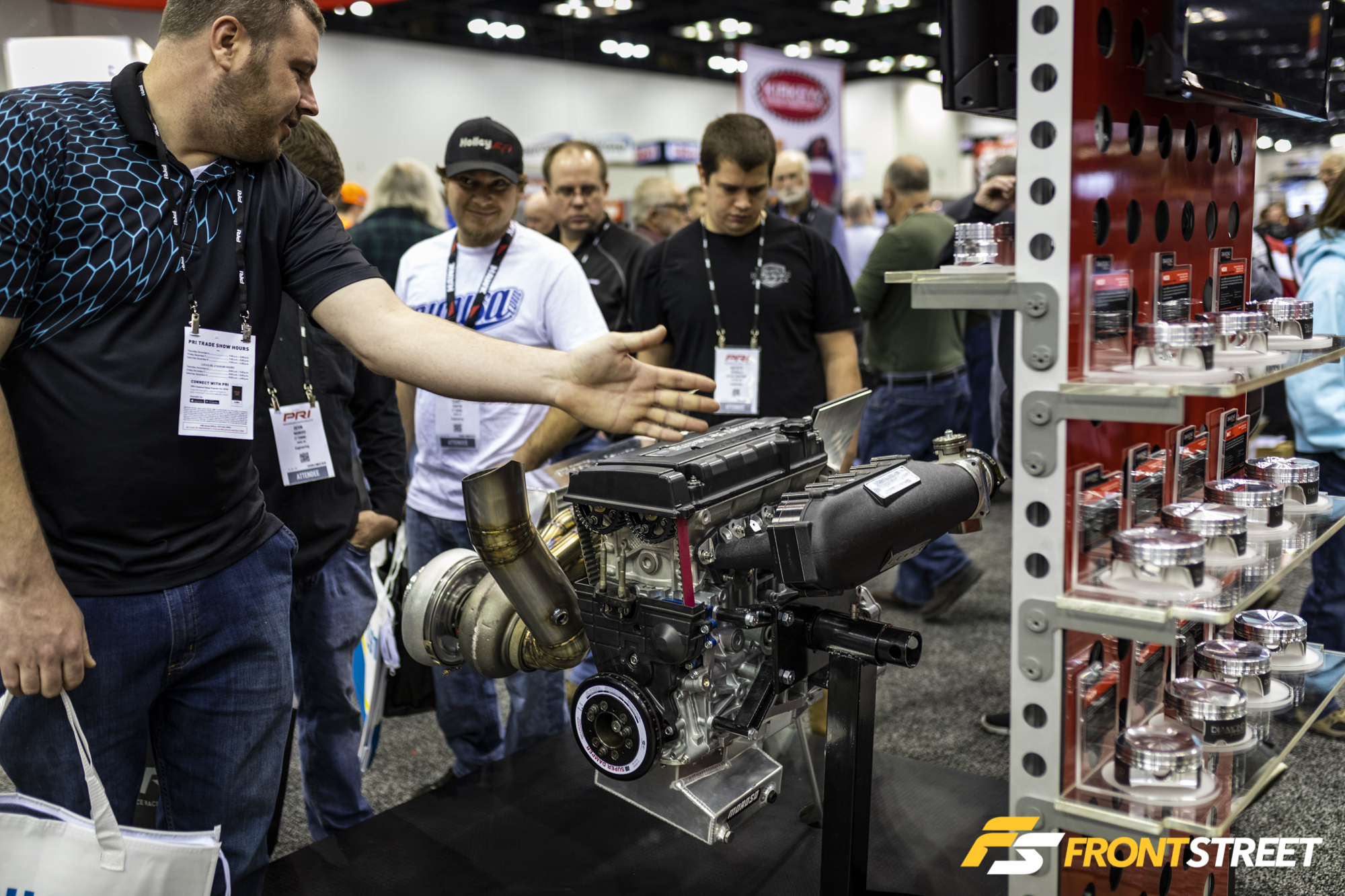
Shawn Ramey’s record-holding B18C was on the rack in the Diamond Pistons booth. The 7.90 elapsed time at 189.9 mph means 1,400 horsepower from the Precision Turbo-boosted four-cylinder. Not surprising in this equation was the 4 Piston cylinder head sitting on top. It seemed like everywhere I turned, there was their logo on another part.
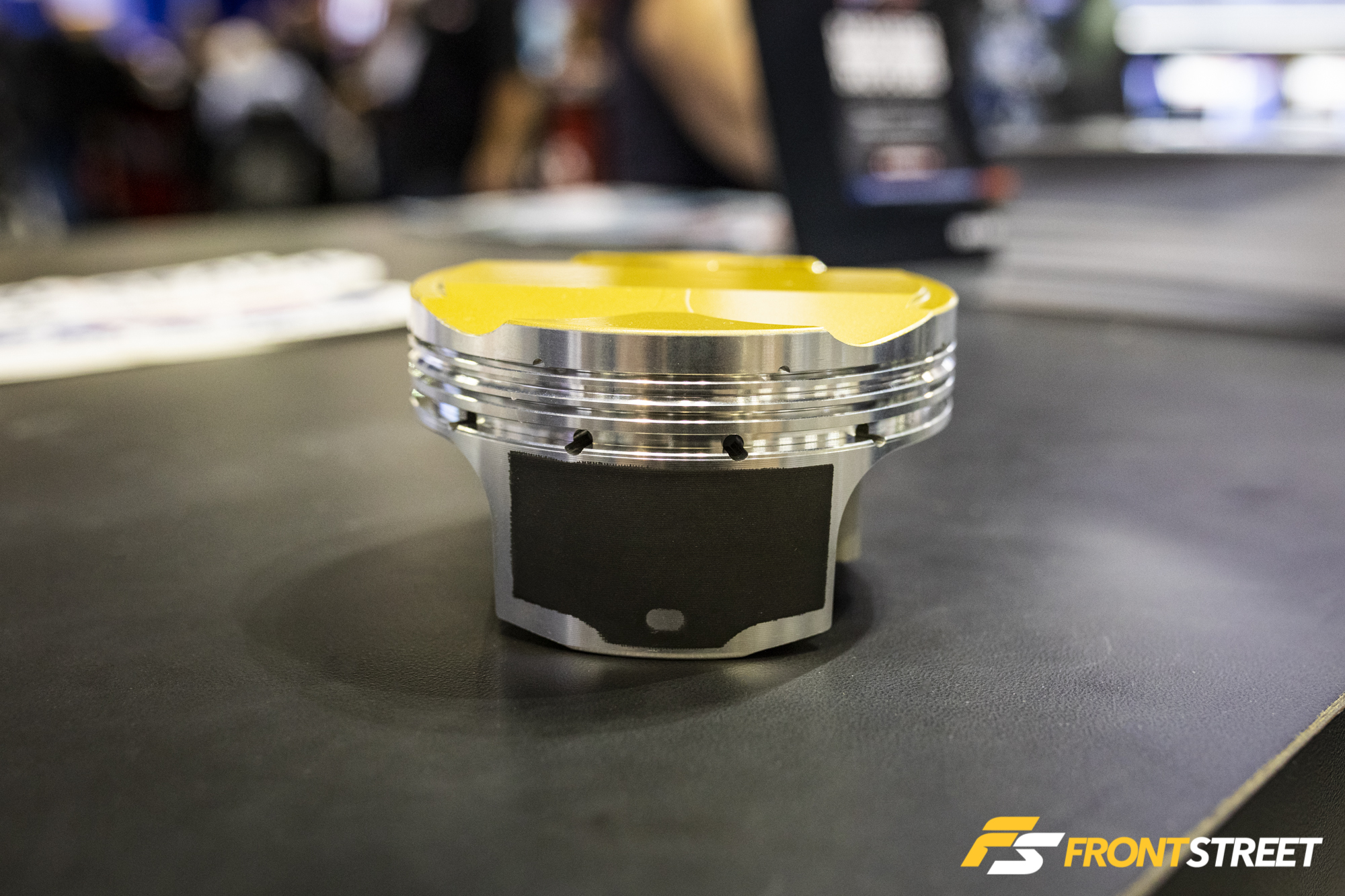
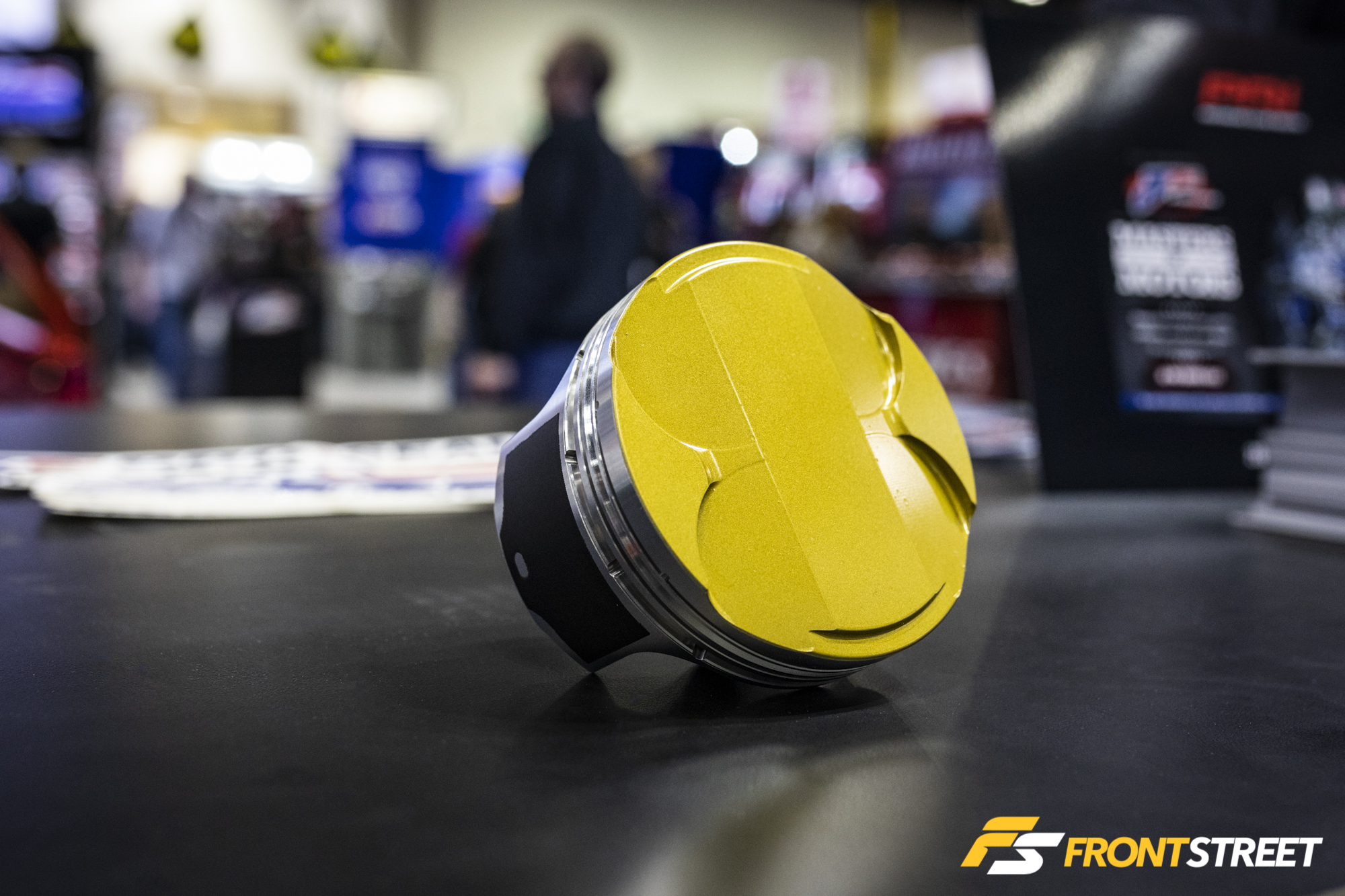
Diamond Pistons’ shelf-stock 2,000-horse-capable Coyote Ford slugs offer a ton of features in an affordable package, and the company has them available and ready for shipment.
“After our release in 2018 of the industry-first 2,000HP rated LS pistons, the modular community burned up our blog and social media showing interest in that same piston design, but for the modular platform. We listened to what the racers and builders desired, then went to work designing the MOD2K 2,000-horsepower-rated Modular piston line,” says Diamond’s Mike Panetta.
These pistons have moly-coated skirts, H-13 tool steel Trend Performance wrist pins, and a Total Seal AP stainless piston ring package.
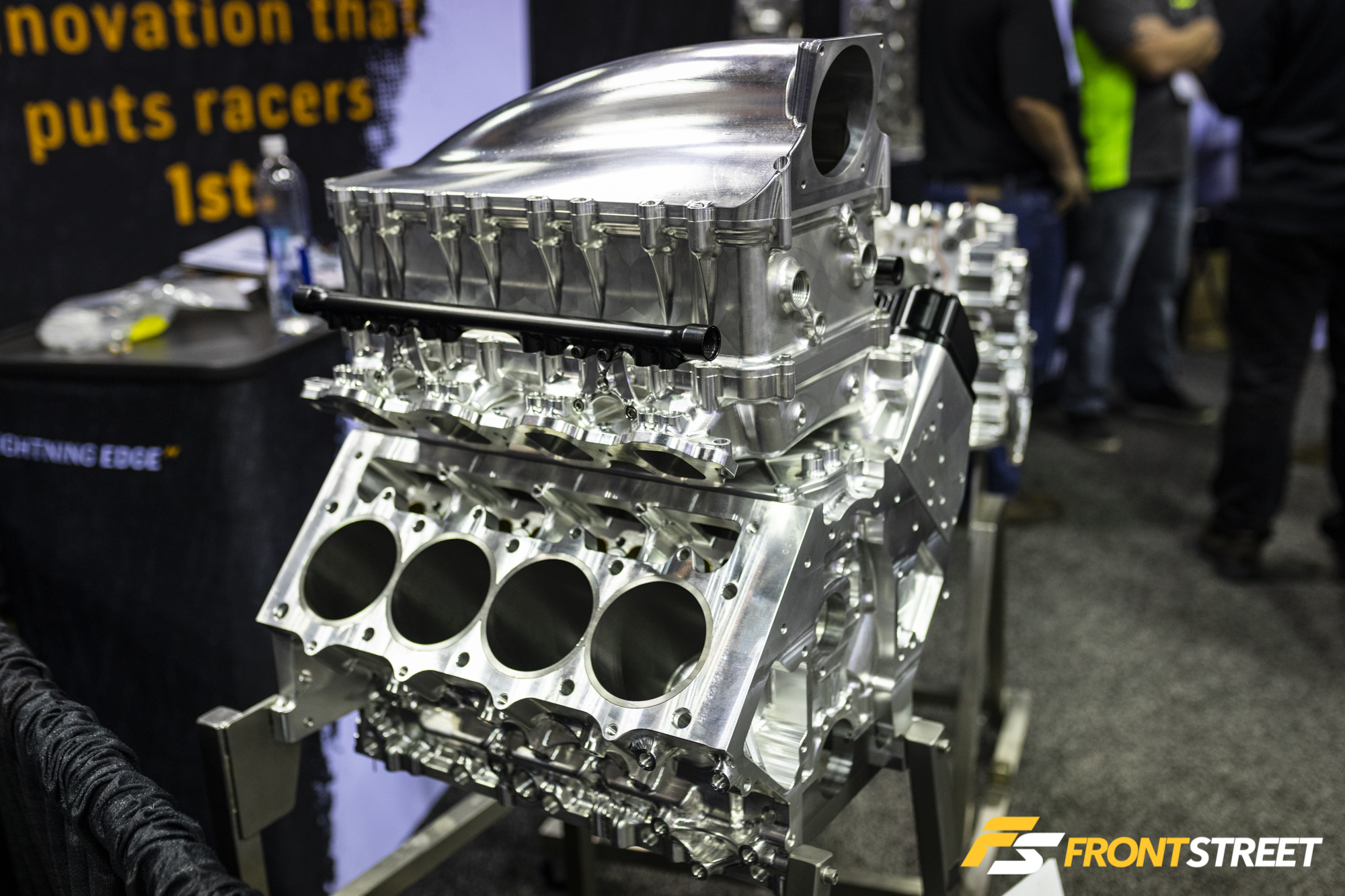
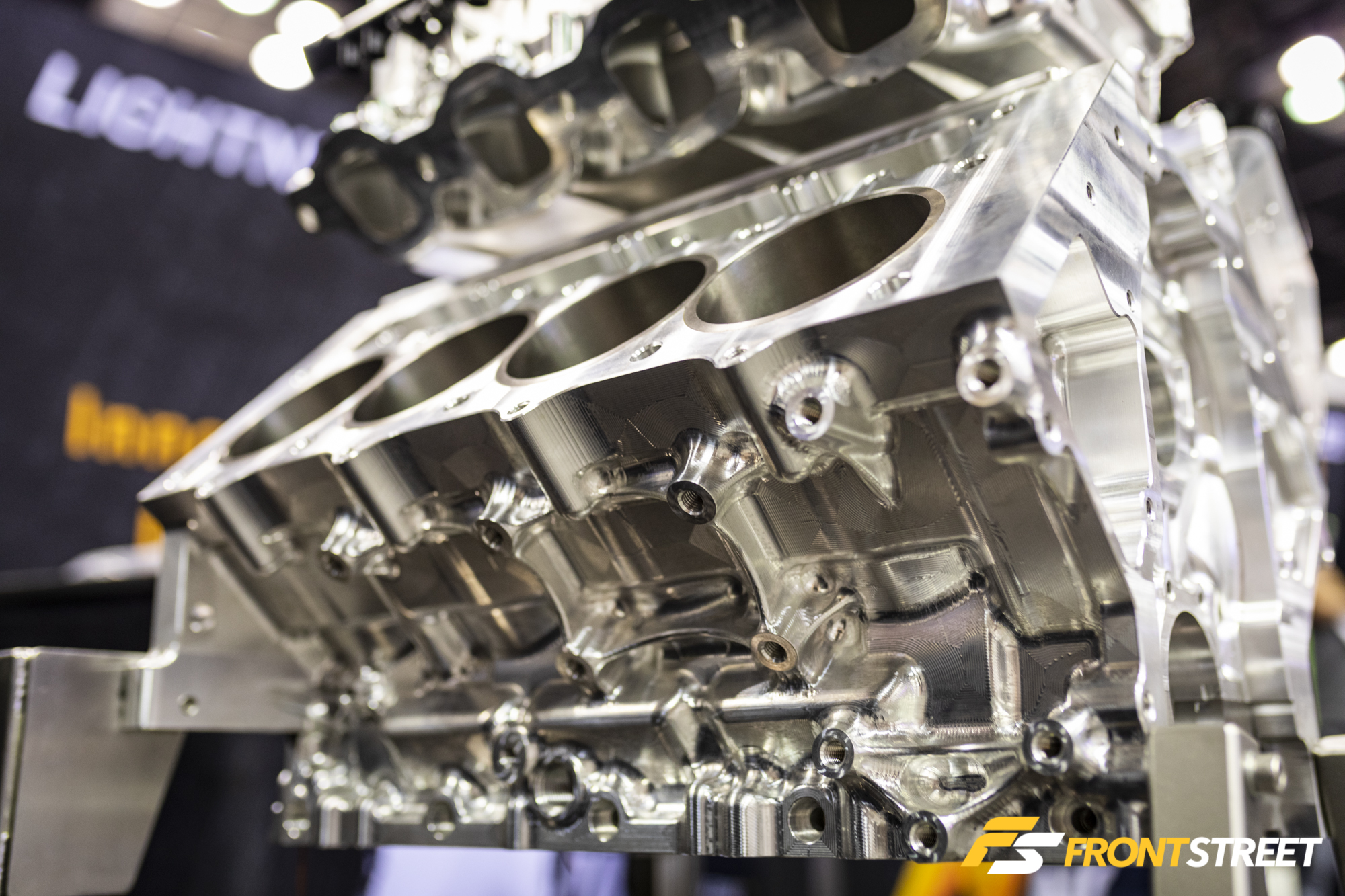
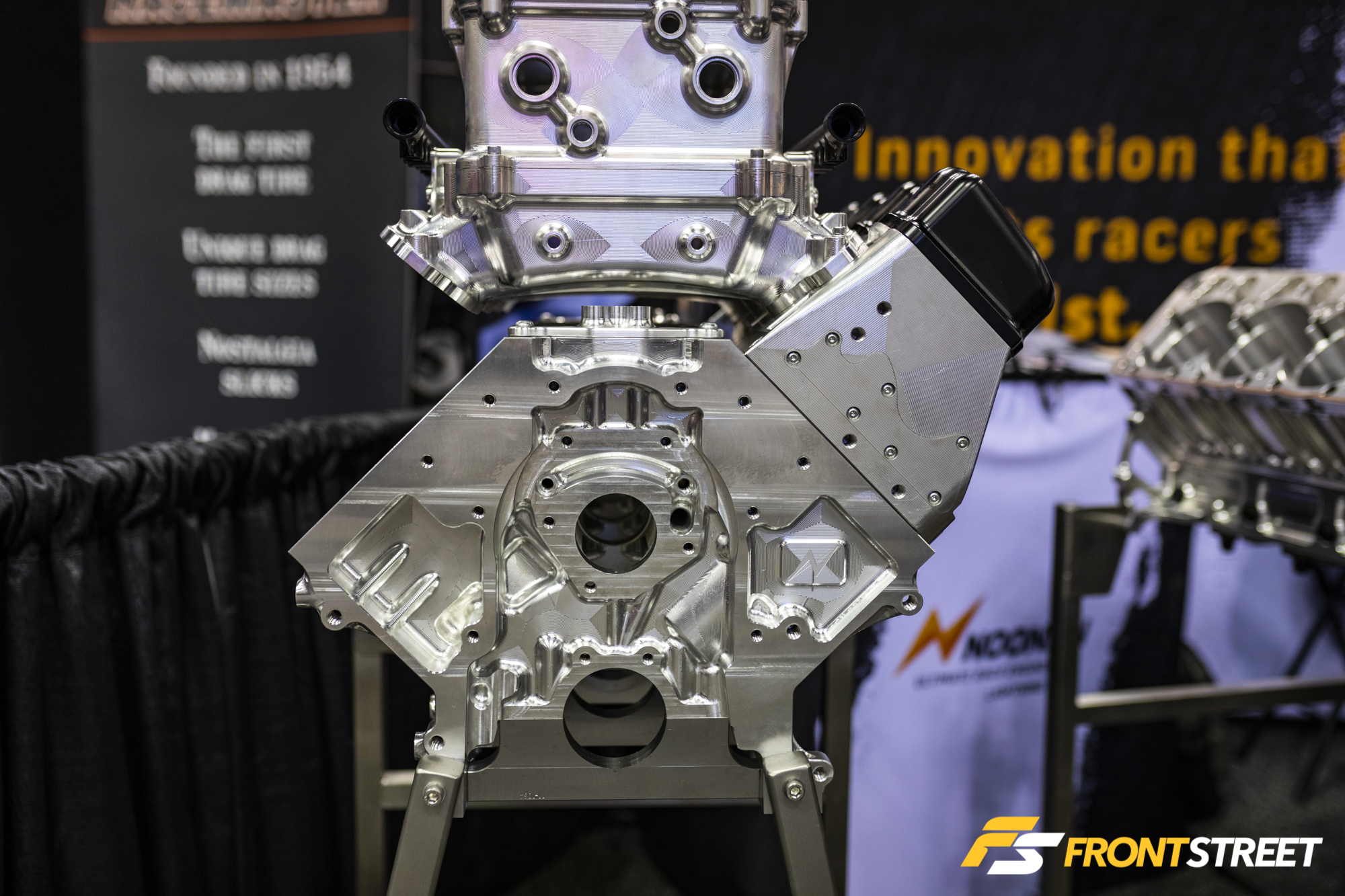
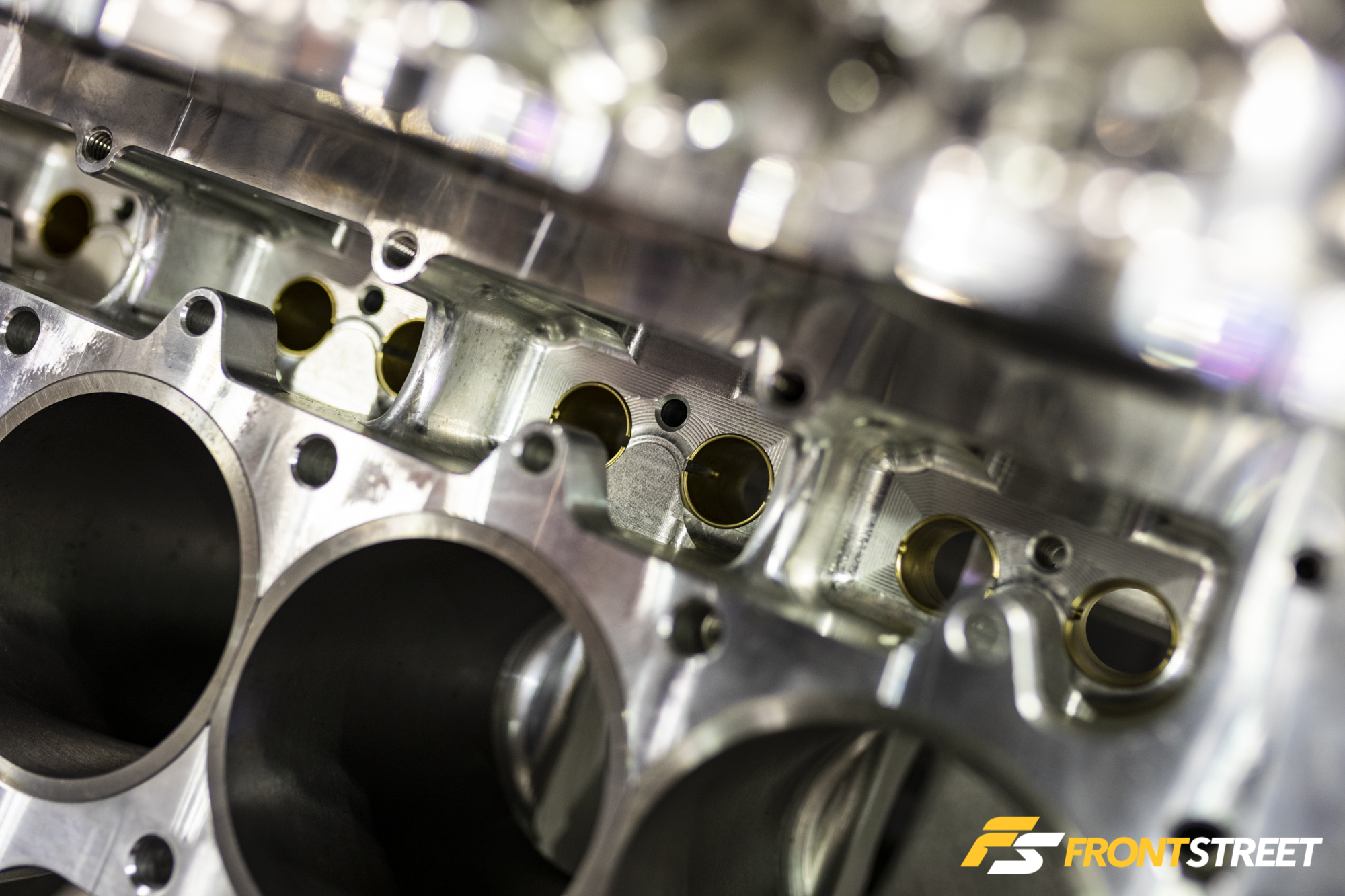
The LS-Edge race engine block from the Aussie wizards at Noonan Race Engineering is CNC-machined from 6061 aluminum billet and has a 9.750-inch desk height to go with its raised camshaft height. In addition, the company specifies a Ford Cleveland main bearing dimension to ease the process of ordering a crankshaft; a six-bolt head fastener pattern combines with the turbocharger oil feed ports in the lifter valley to make this one of the nicer LS setups we’ve seen.
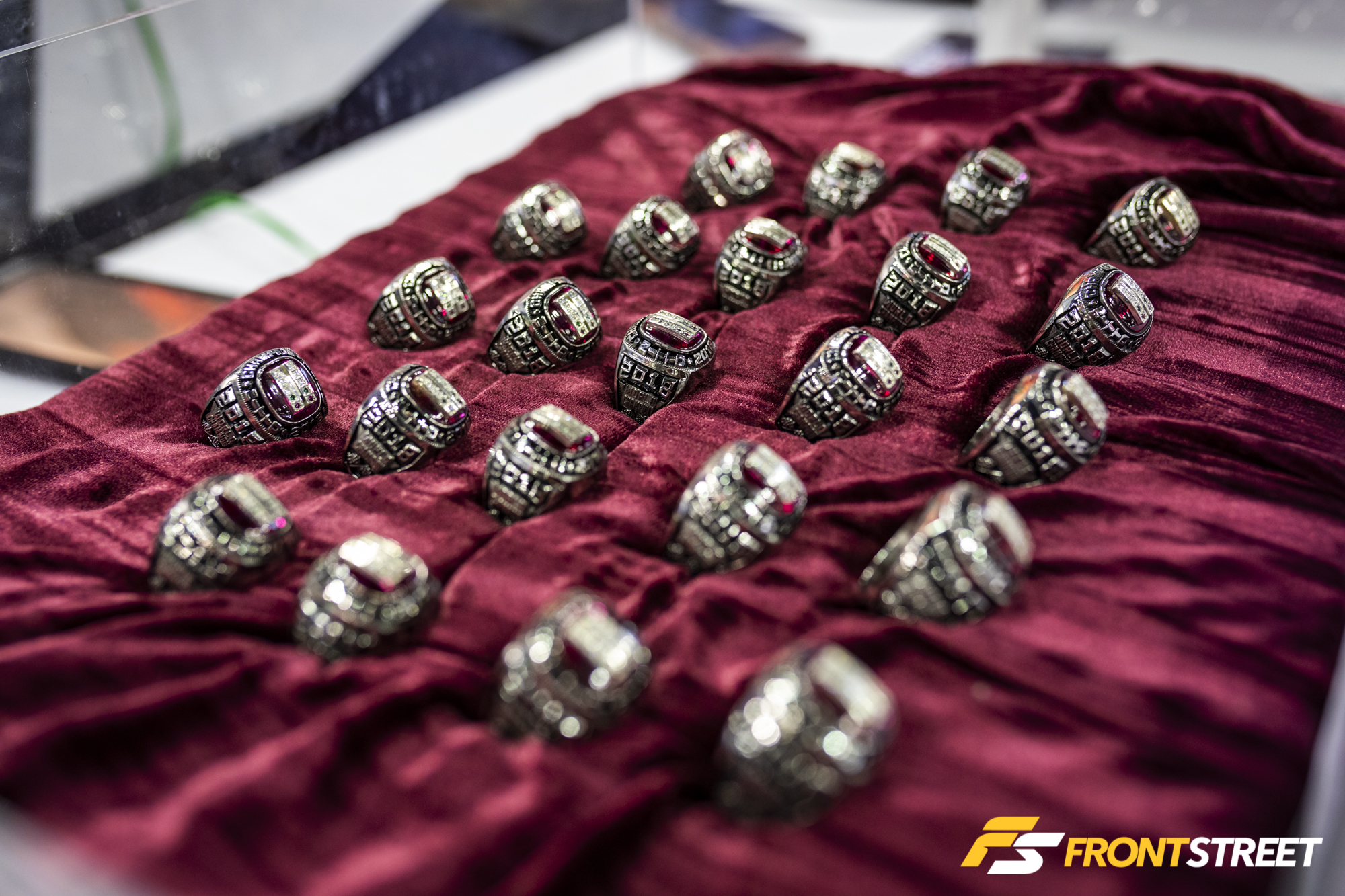
I spent Friday evening at the NMCA and NMCA awards ceremonies, and it was nice to see some friends up on stage to receive their Nitto Diamond Tree rings. The NMRA has been holding Ford heads-up drag races for 20 years, and I was at the very first one in 1999. How is this possible? Surely I’m not that old.
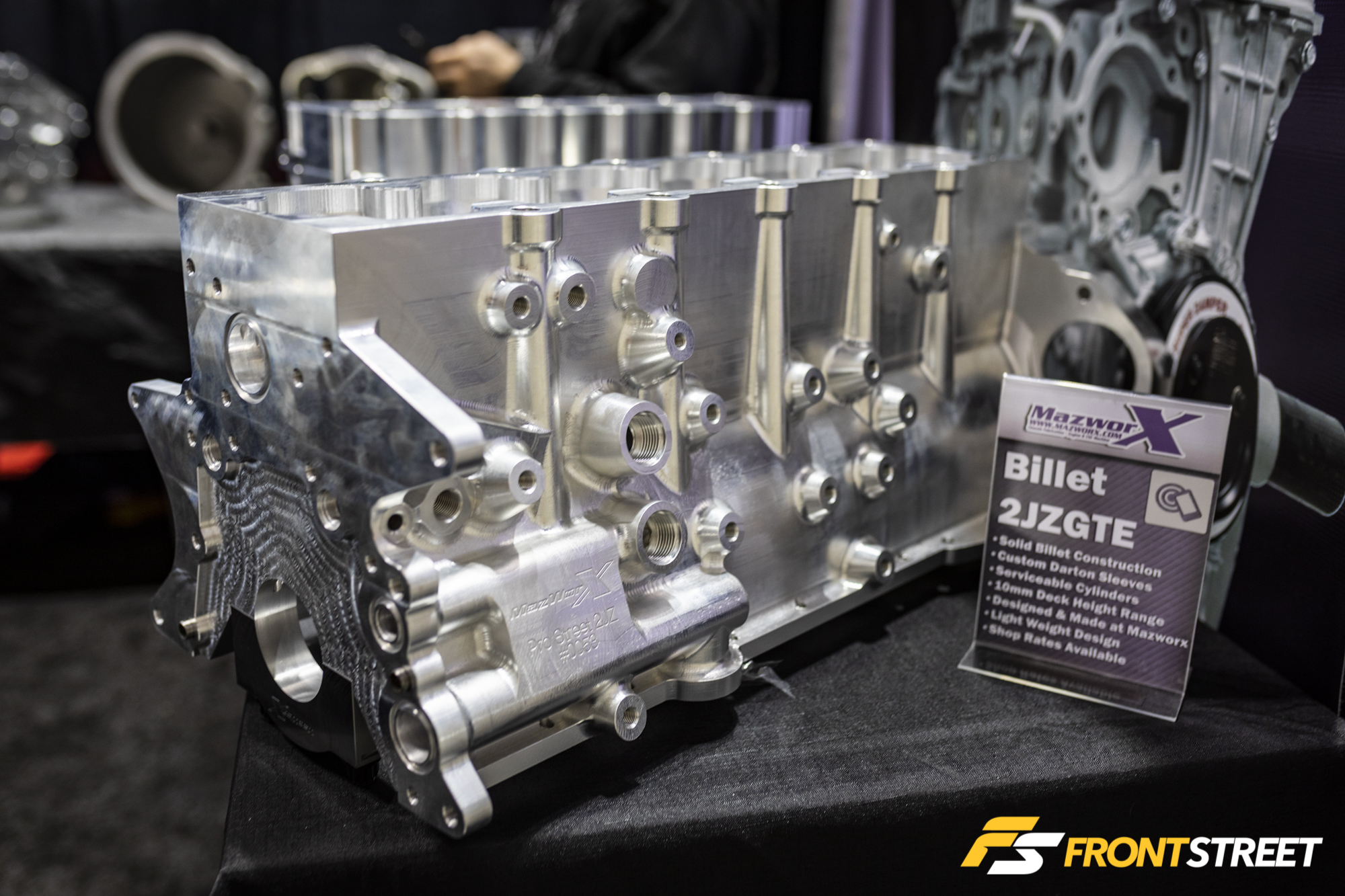
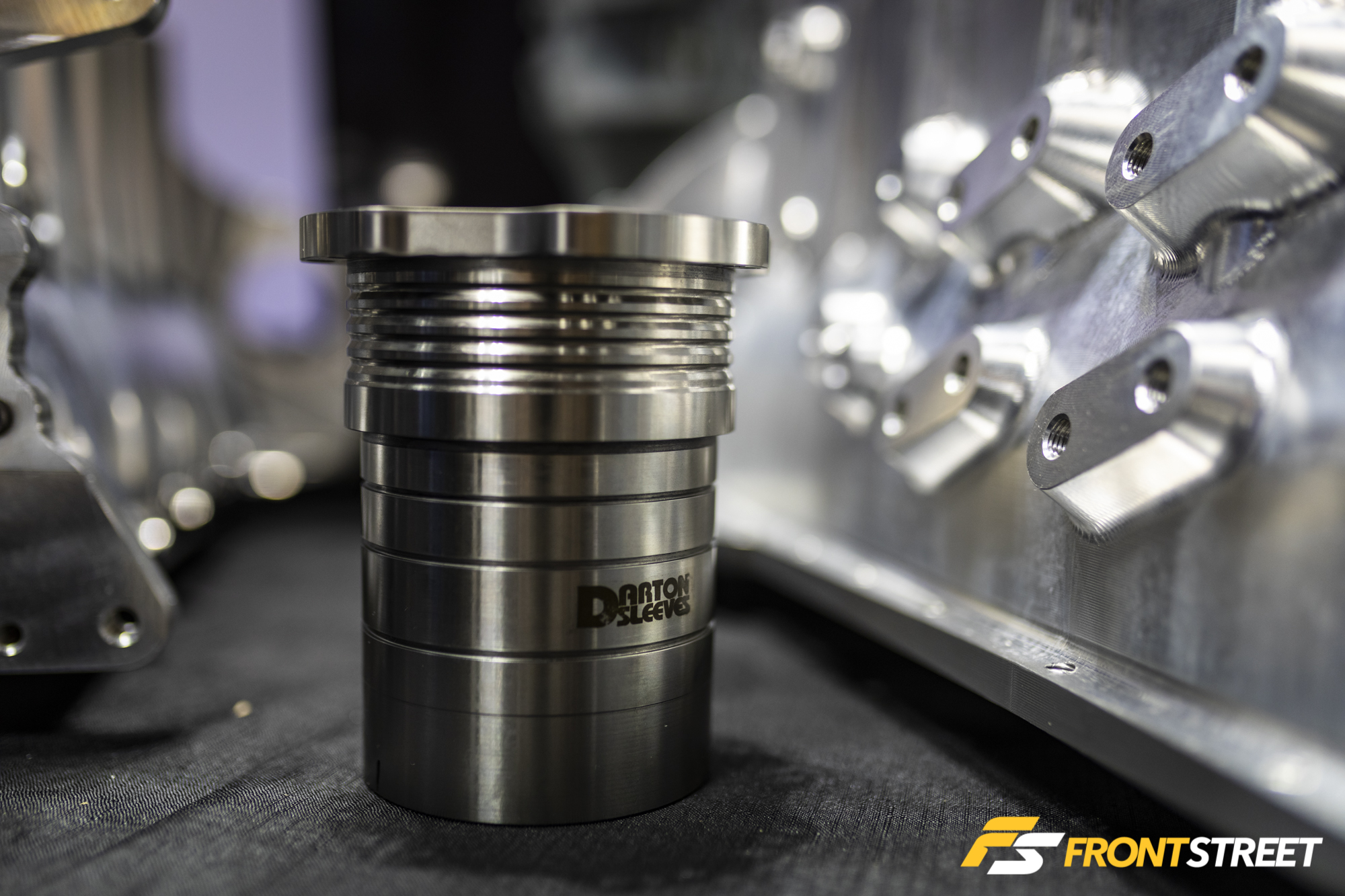
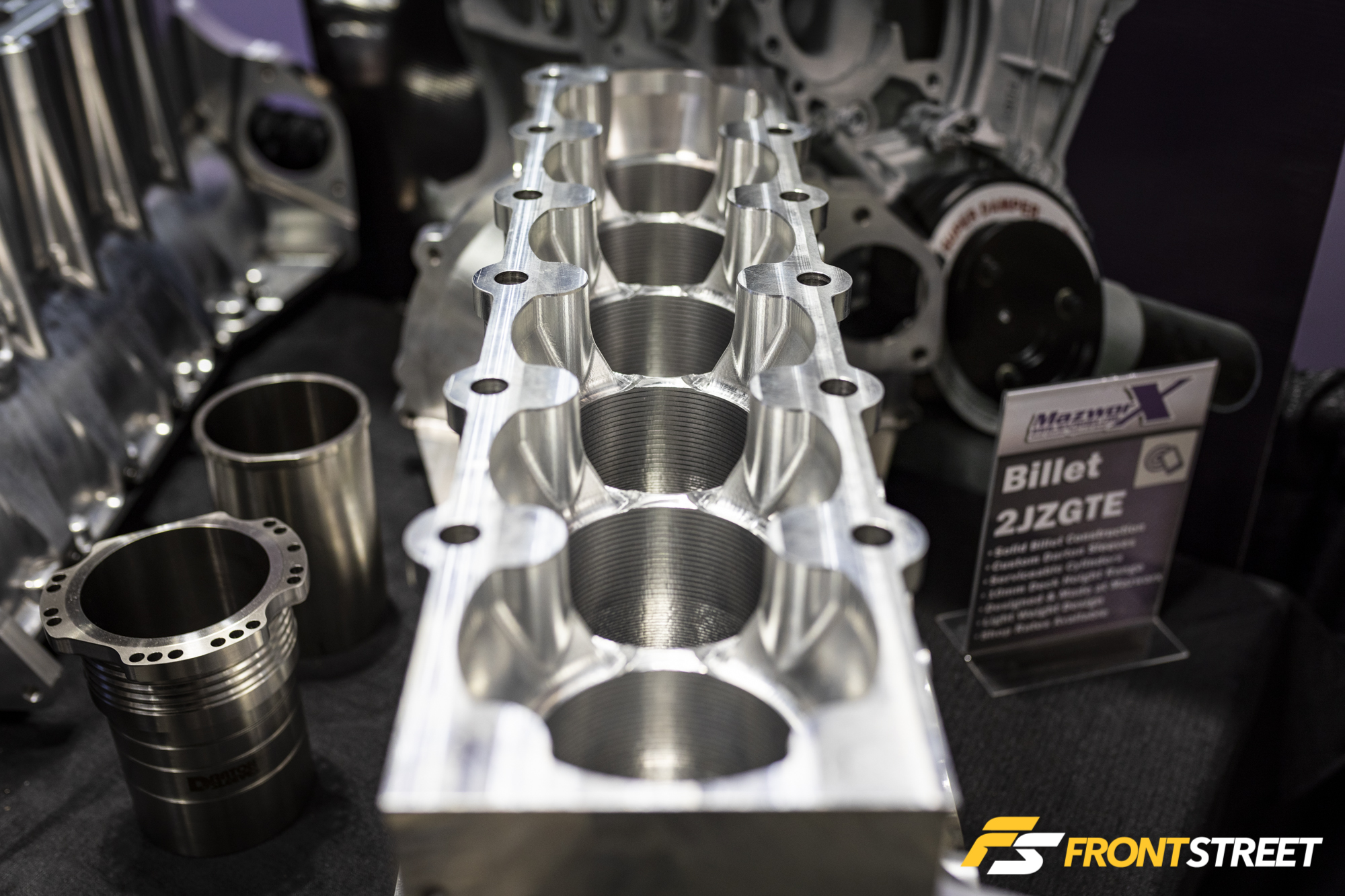
I found another billet 2JZ block in the Mazworx booth. This one was solid billet and featured Darton sleeves, which are serviceable should there be an issue. Mazworx has designed it to be able to have the deck height raised by .400-inch, and says that the removal of the water jackets helps to keep the cylinders round in all-out drag competition where ring seal is the priority. The block has four-bolt caps on mains 2–6; the block has been designed to strengthen the connection between the head stud and main stud. The block is manufactured in-house at Mazworx, and has been designed to be the ultimate choice for use above 2,000 horsepower.
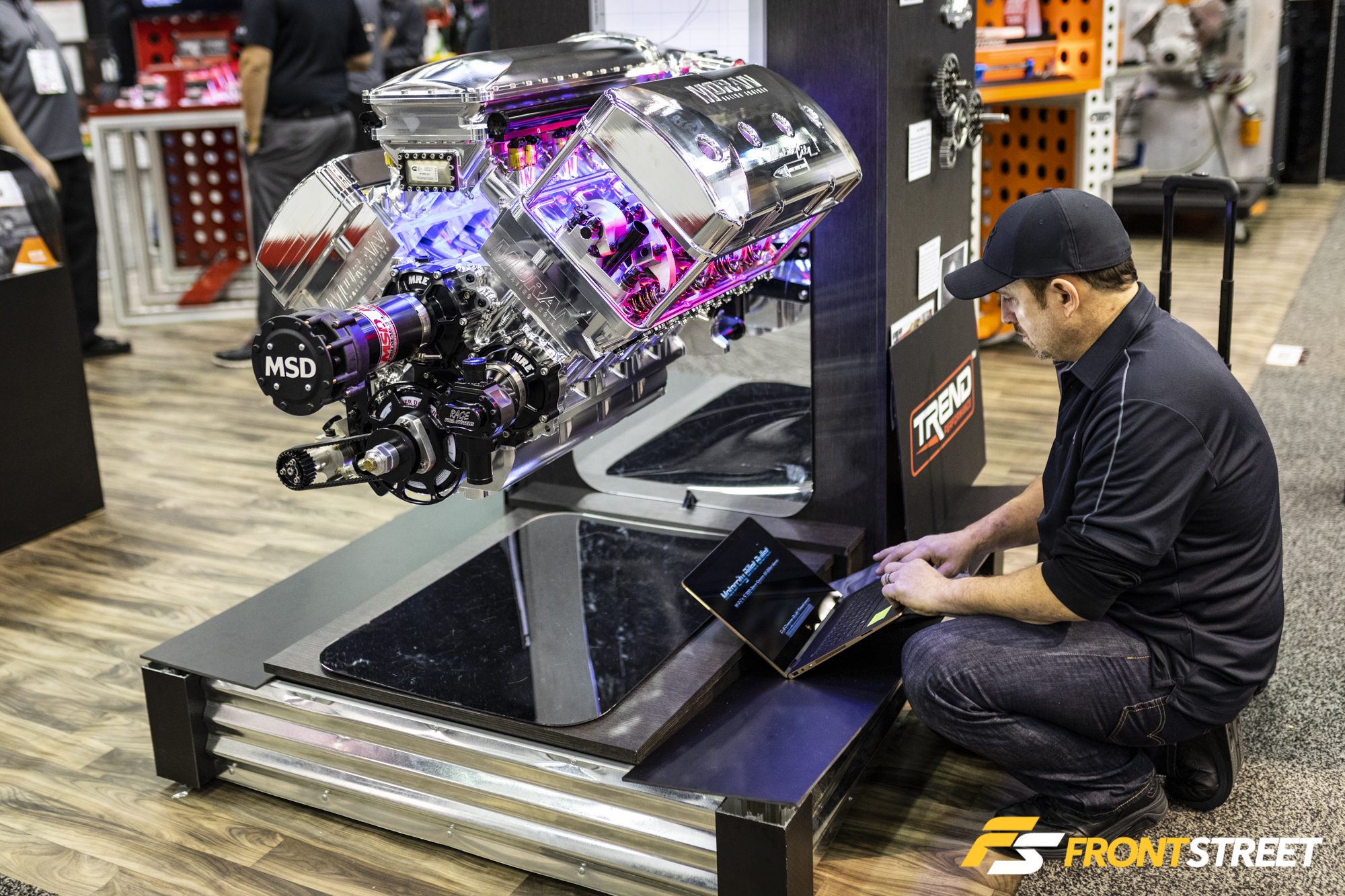
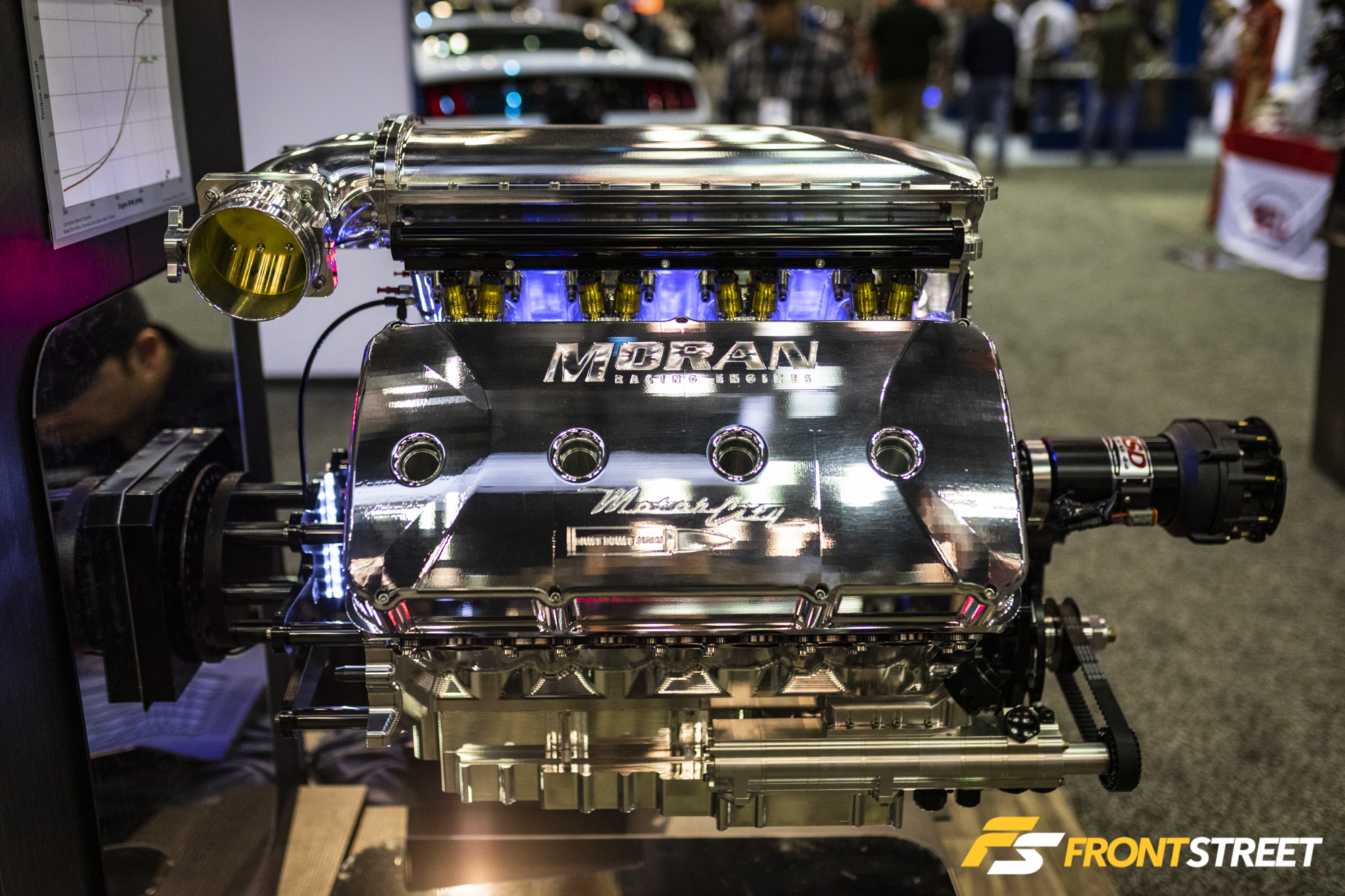
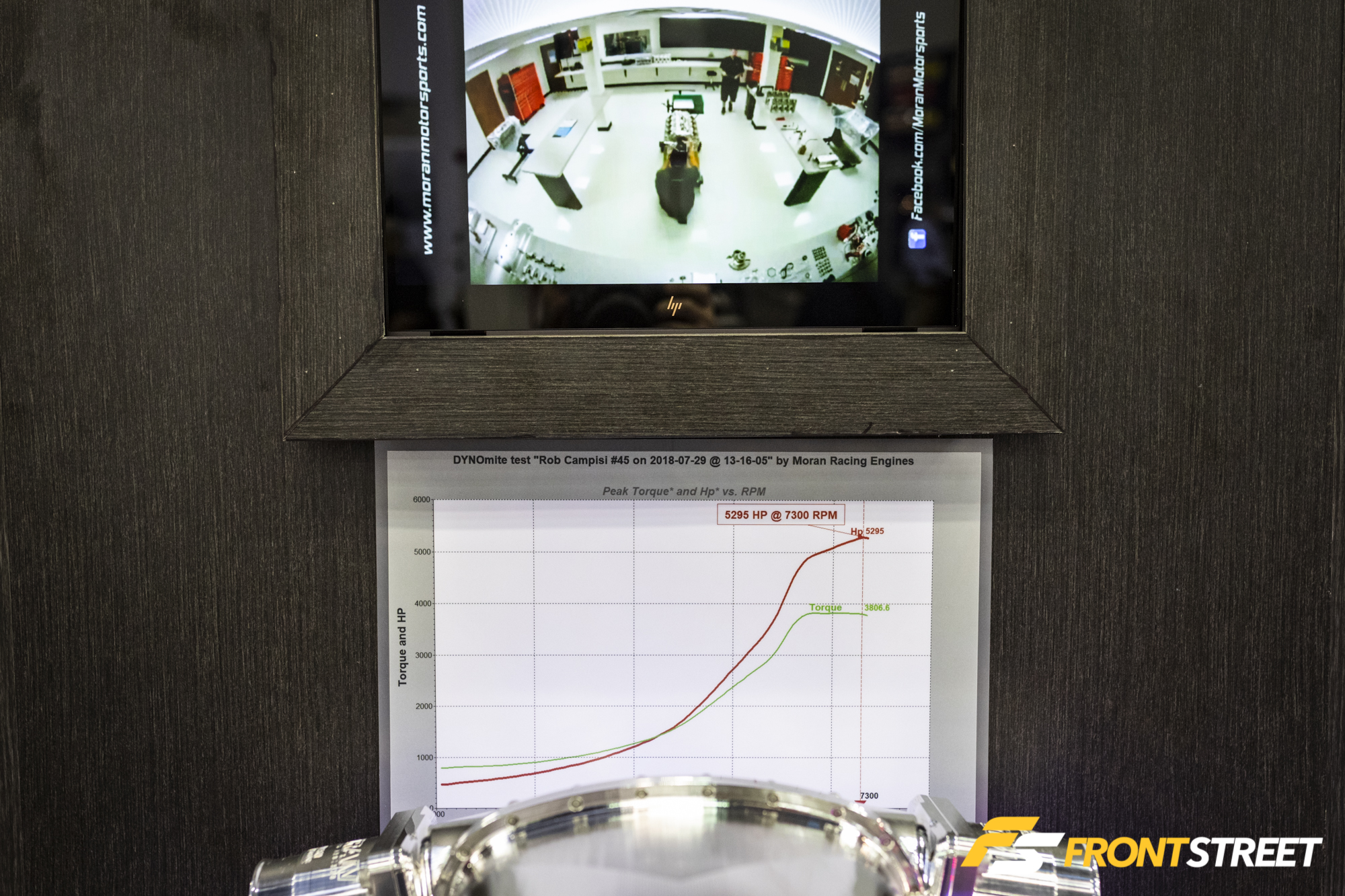
Obviously there’s far more at PRI than just engines and engine parts, but there were so many neat powerplants across so many different platforms that I just had to feature them all. In closing, let’s take a look at the most powerful one I found: Rob Campisi’s Moran Racing Engines-built 670 ci all-billet Hemi, which burned up the internet earlier this year with a 5,295-horsepower dyno run caught on video. We’ll let you test your Google skills to find out more on this one.
All in all, PRI is exciting, energizing, and exhausting; even though the 2018 edition ended just six days ago, I’m ready to do it all over again. Check out the gallery for lots more photos of some of the sights of PRI 2018.
See ya next year!









































































































